Loading...
Number Bonds Over 20 Worksheet
Number Bonds to 10 Ten Frames
Grades: Kindergarten
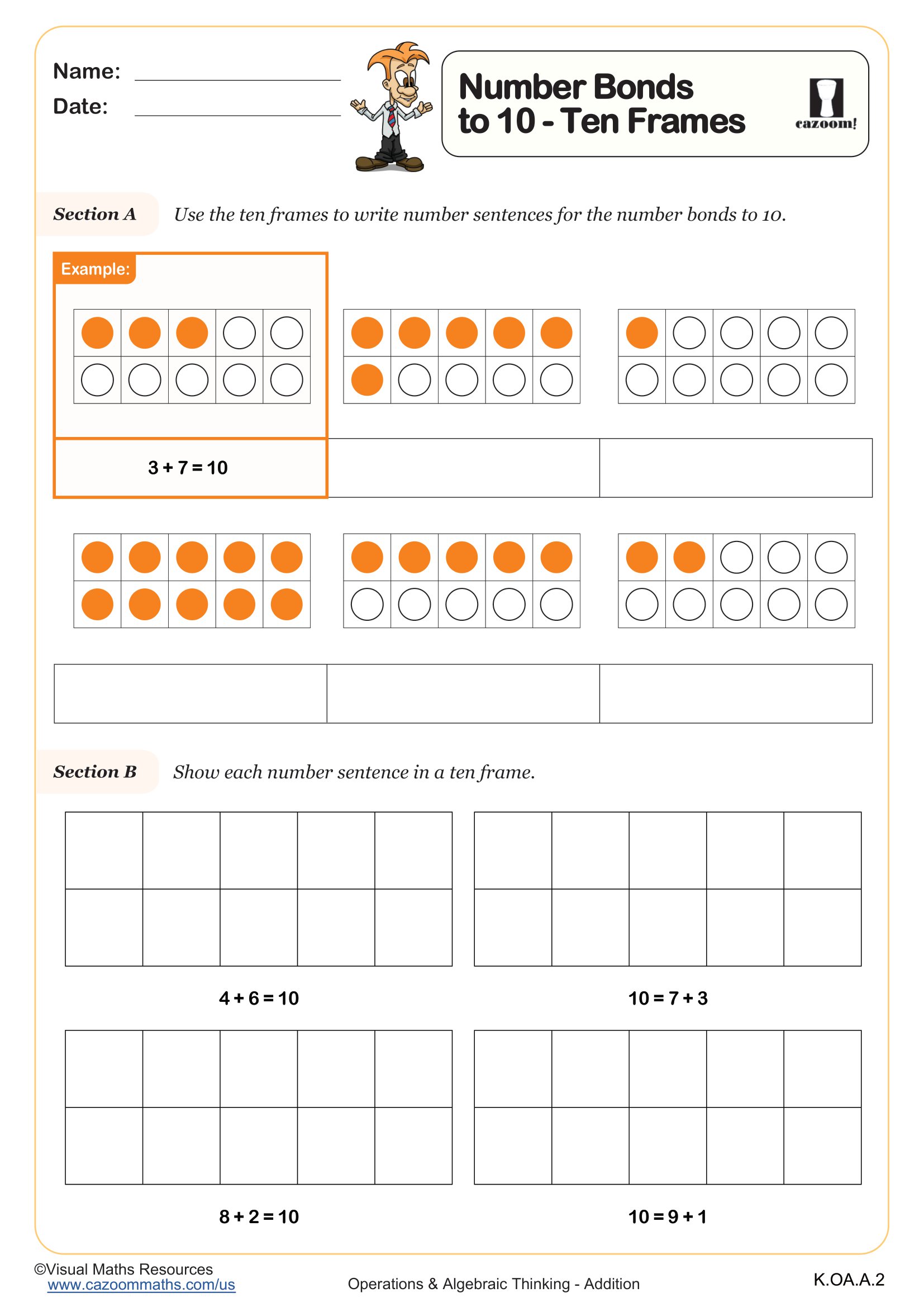
Making 100 with 2 Numbers (A) (multiples of 10)
Grades: 1st Grade
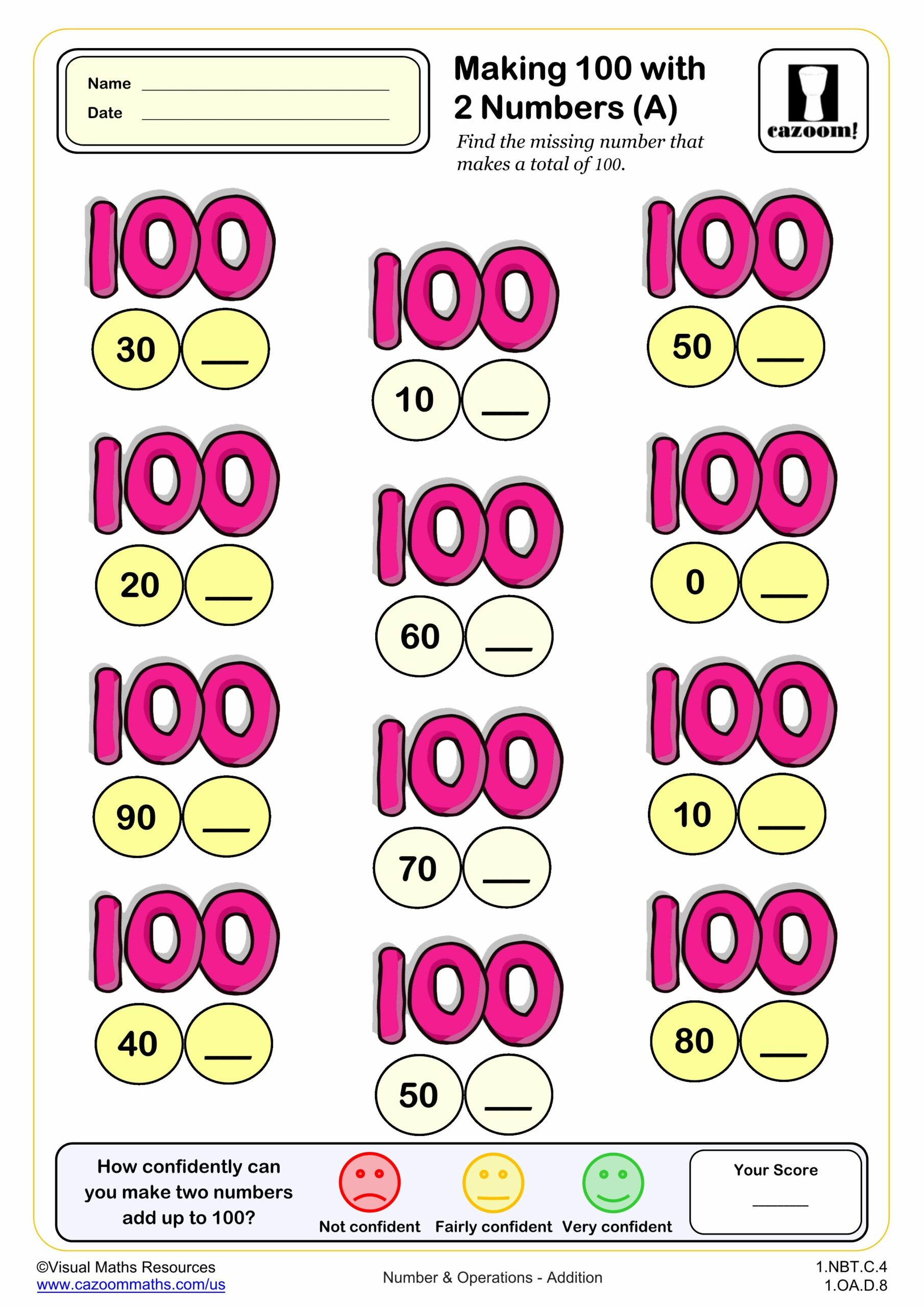
Making 100 with 2 numbers (B) (multiples of 5)
Grades: 1st Grade
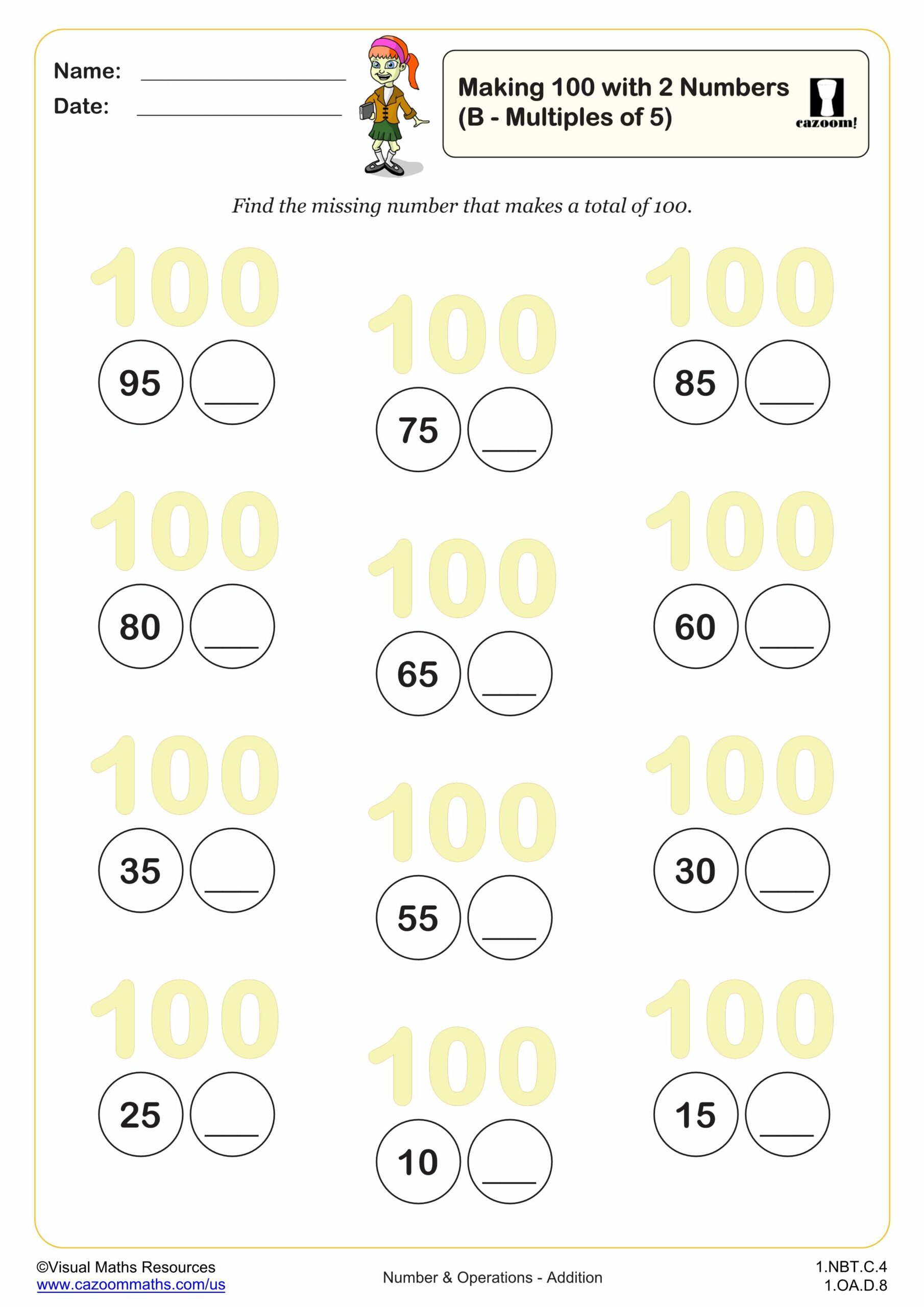
Making 100 with 2 numbers (blanks)
Grades: 1st Grade
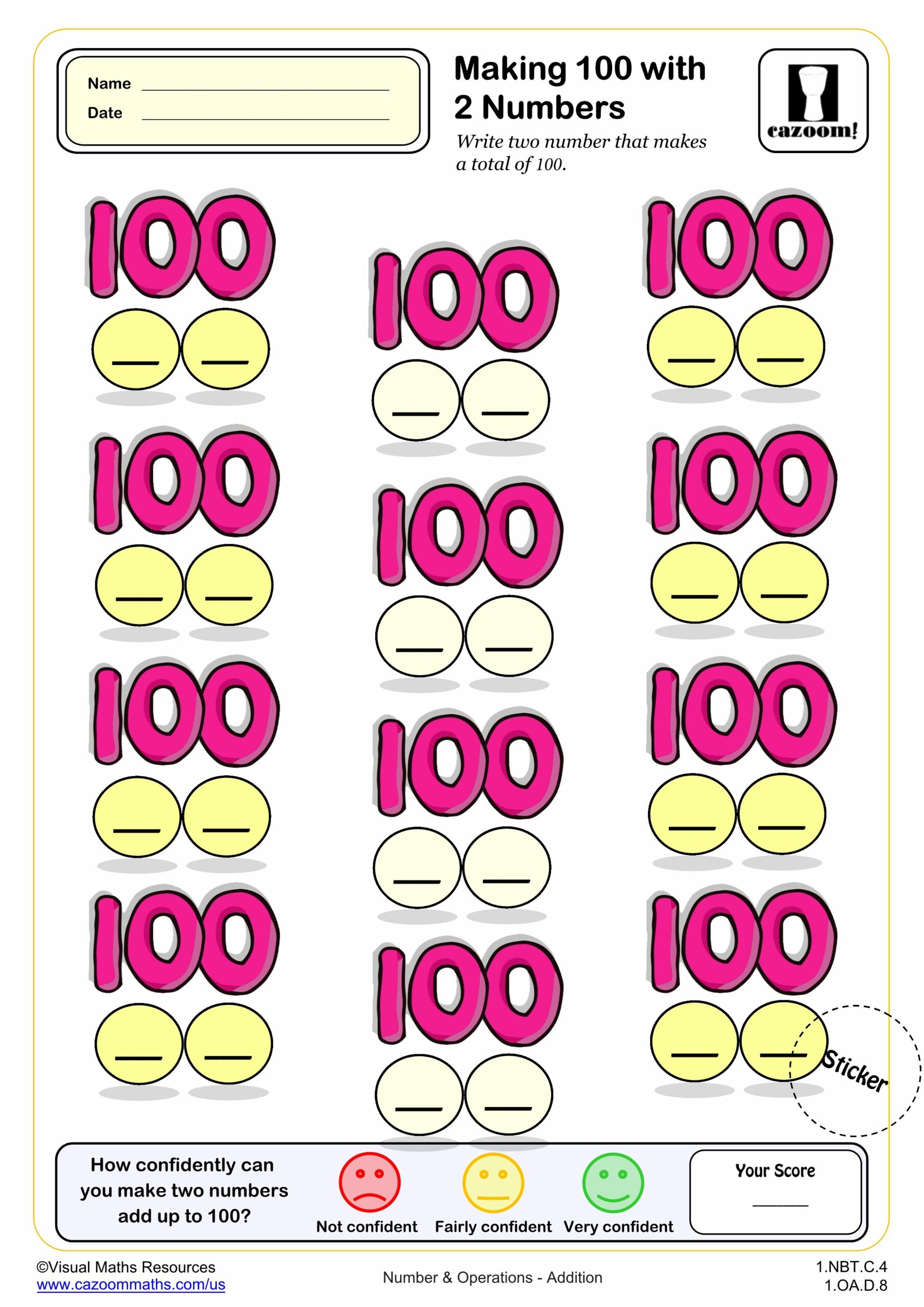
Making 100 with 2 numbers (C)
Grades: 1st Grade
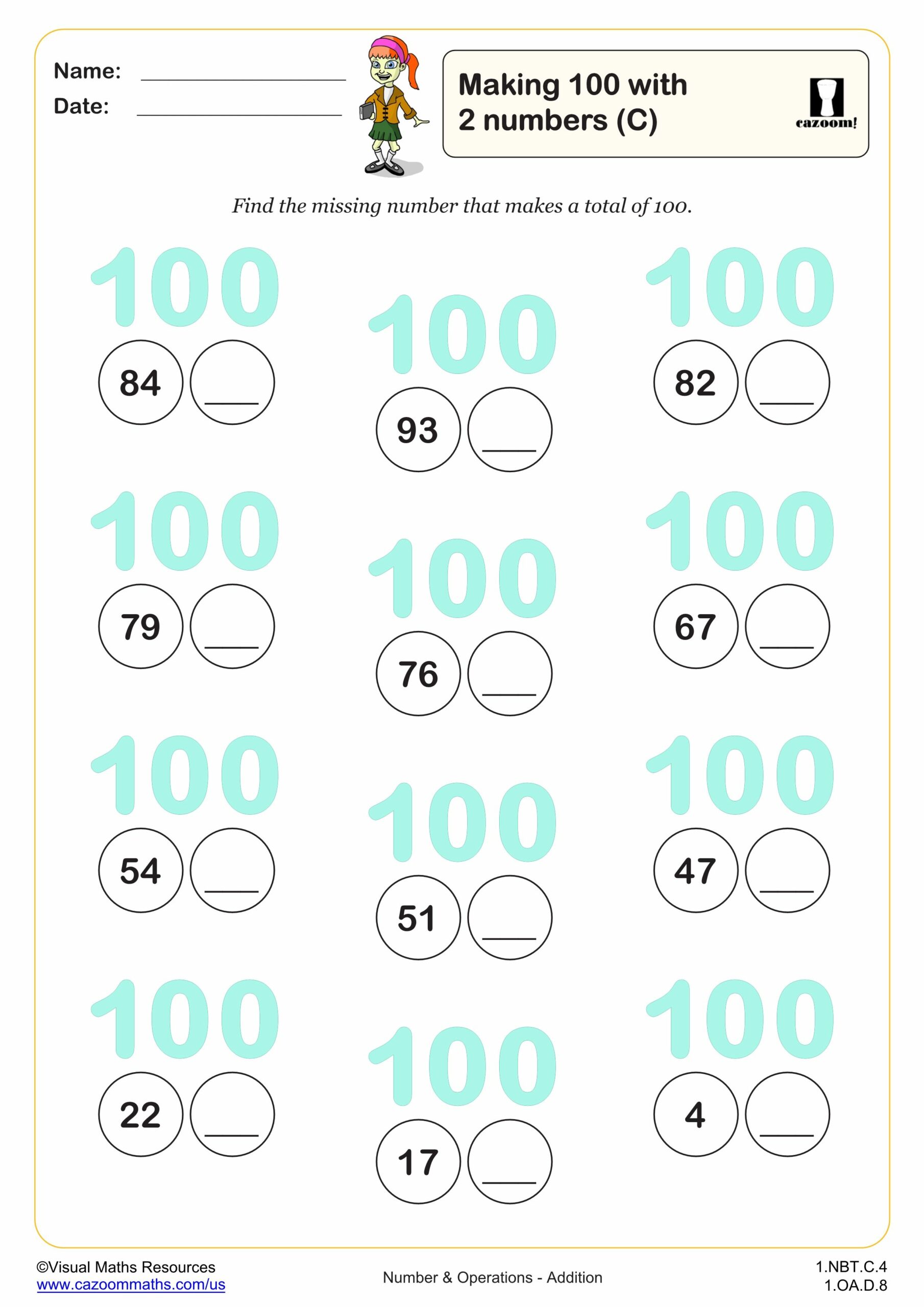
Making 25
Grades: 1st Grade, 2nd Grade
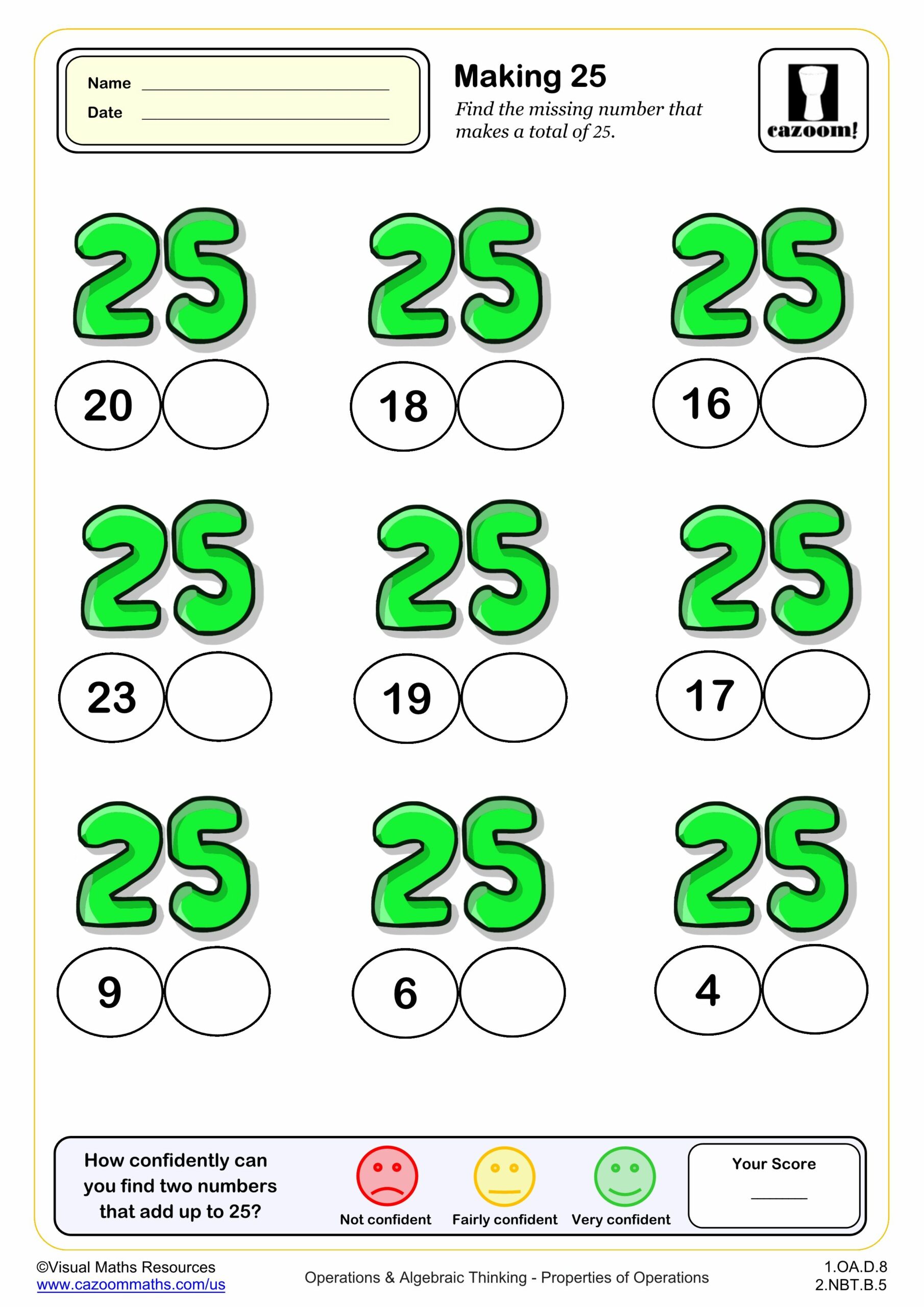
Making 25 (Blanks)
Grades: 1st Grade, 2nd Grade
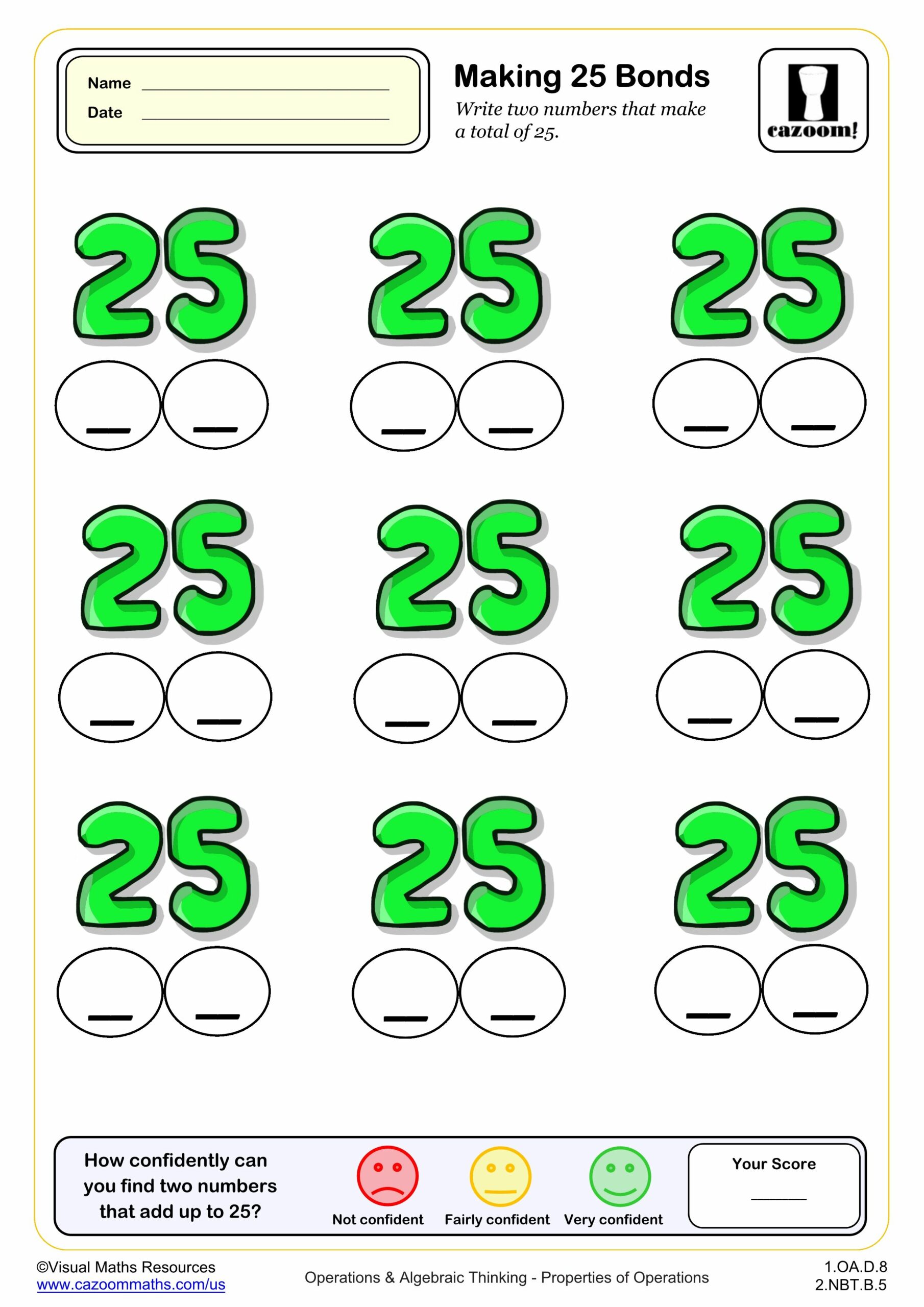
Making 28
Grades: 1st Grade, 2nd Grade
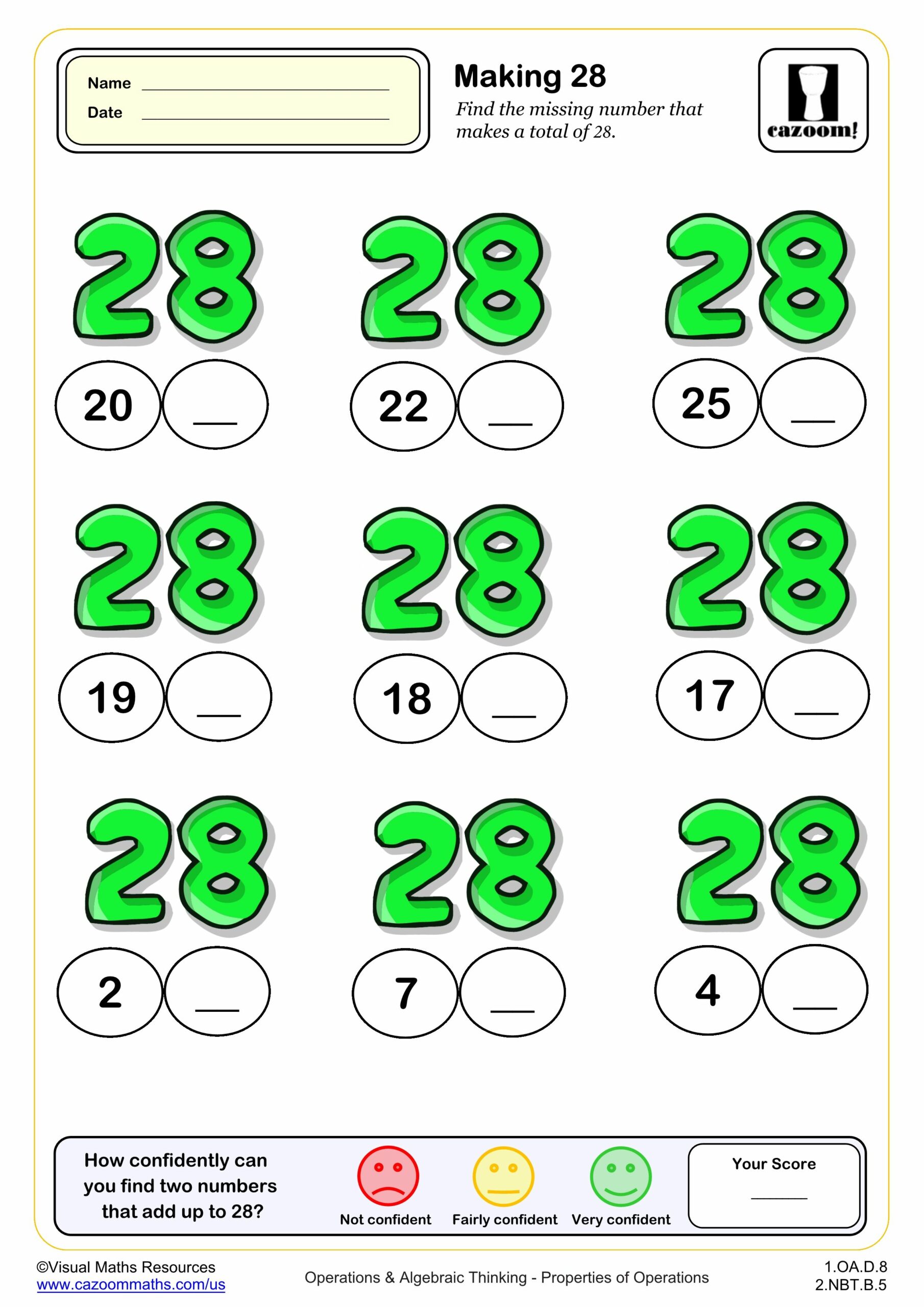
Making 28 (Blanks)
Grades: 1st Grade, 2nd Grade
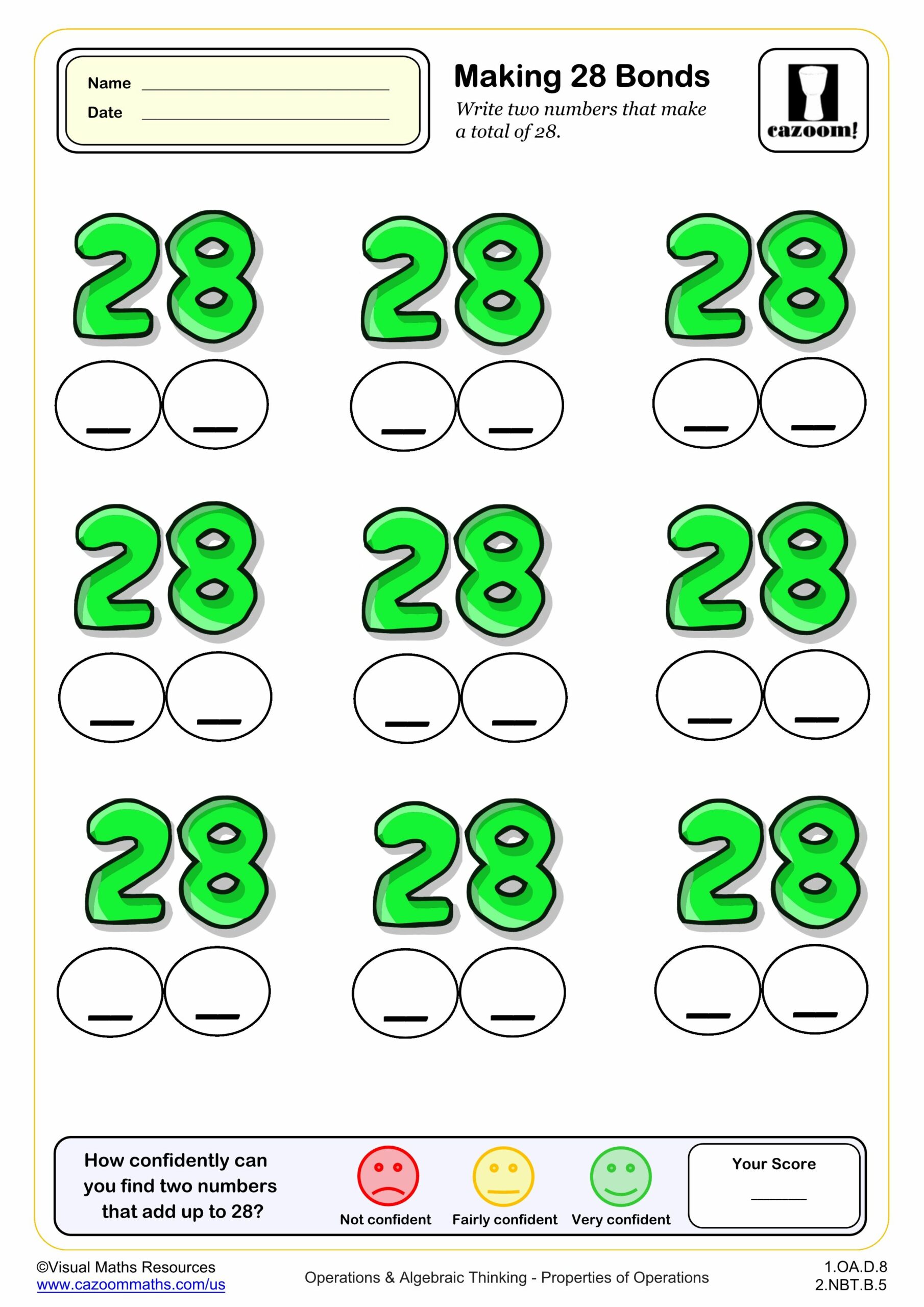
Making 35 (blanks)
Grades: 1st Grade, 2nd Grade
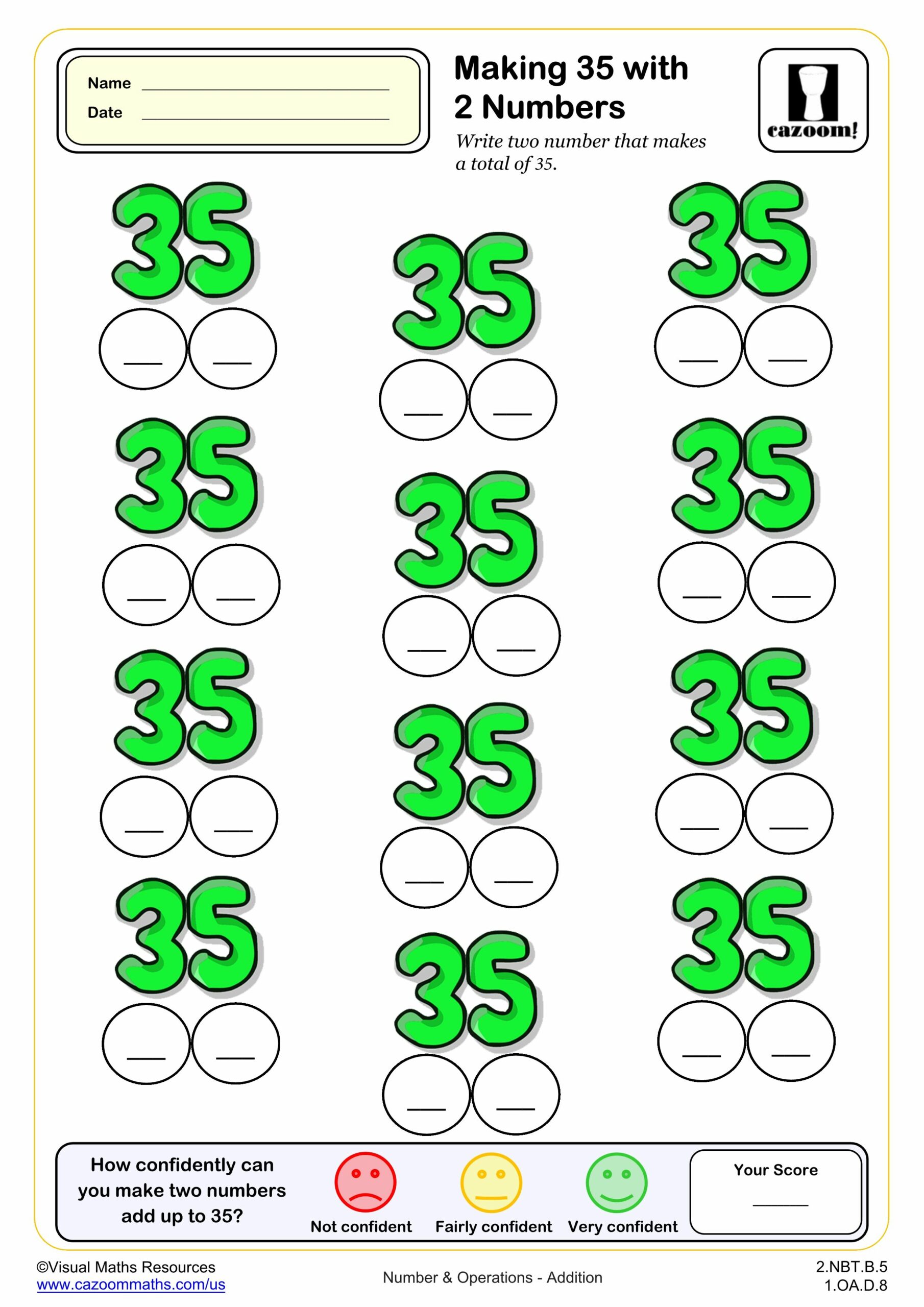
Making 35 with 2 numbers
Grades: 1st Grade, 2nd Grade
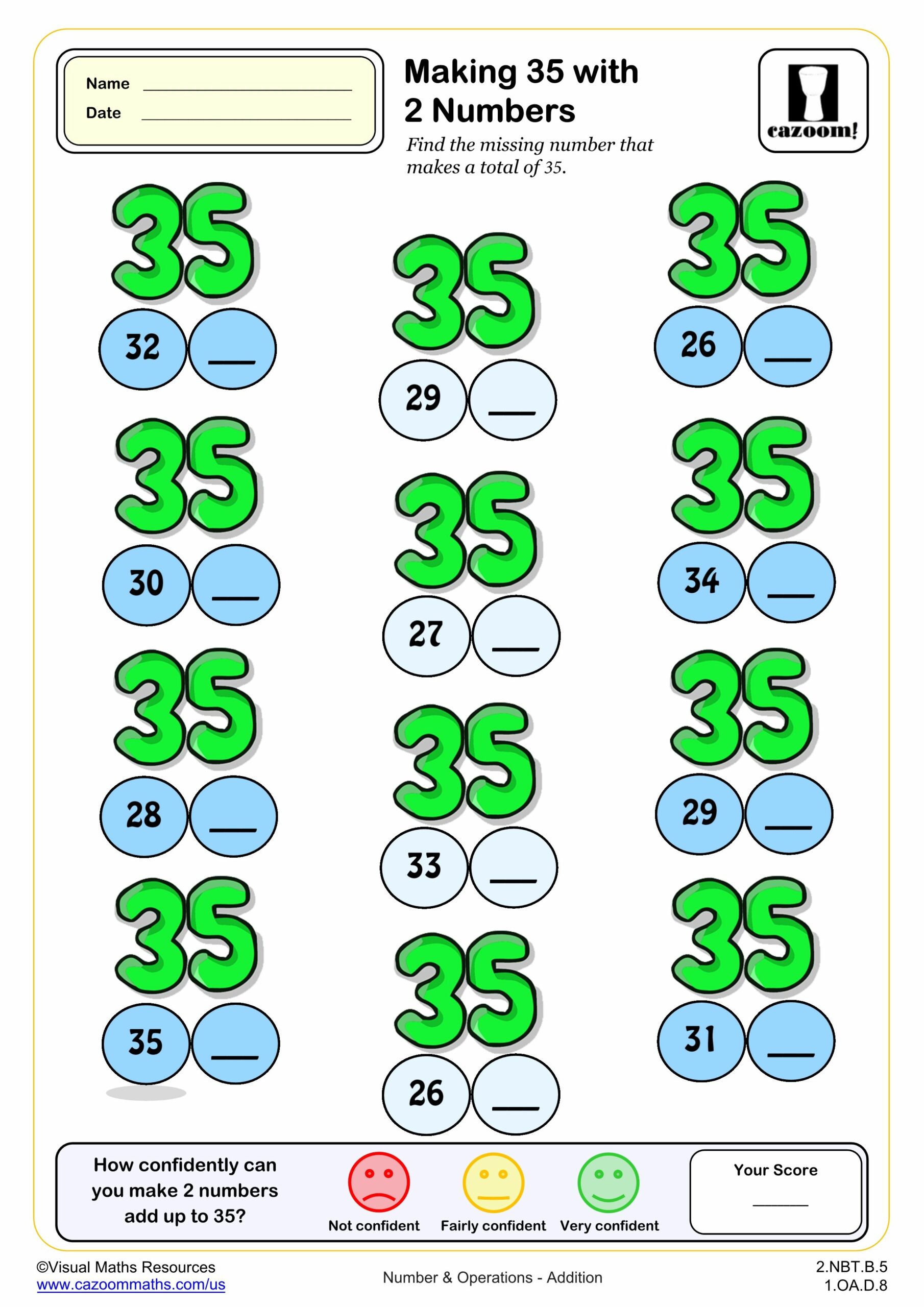
Making 35 with 2 Numbers (BONDS)
Grades: 1st Grade, 2nd Grade
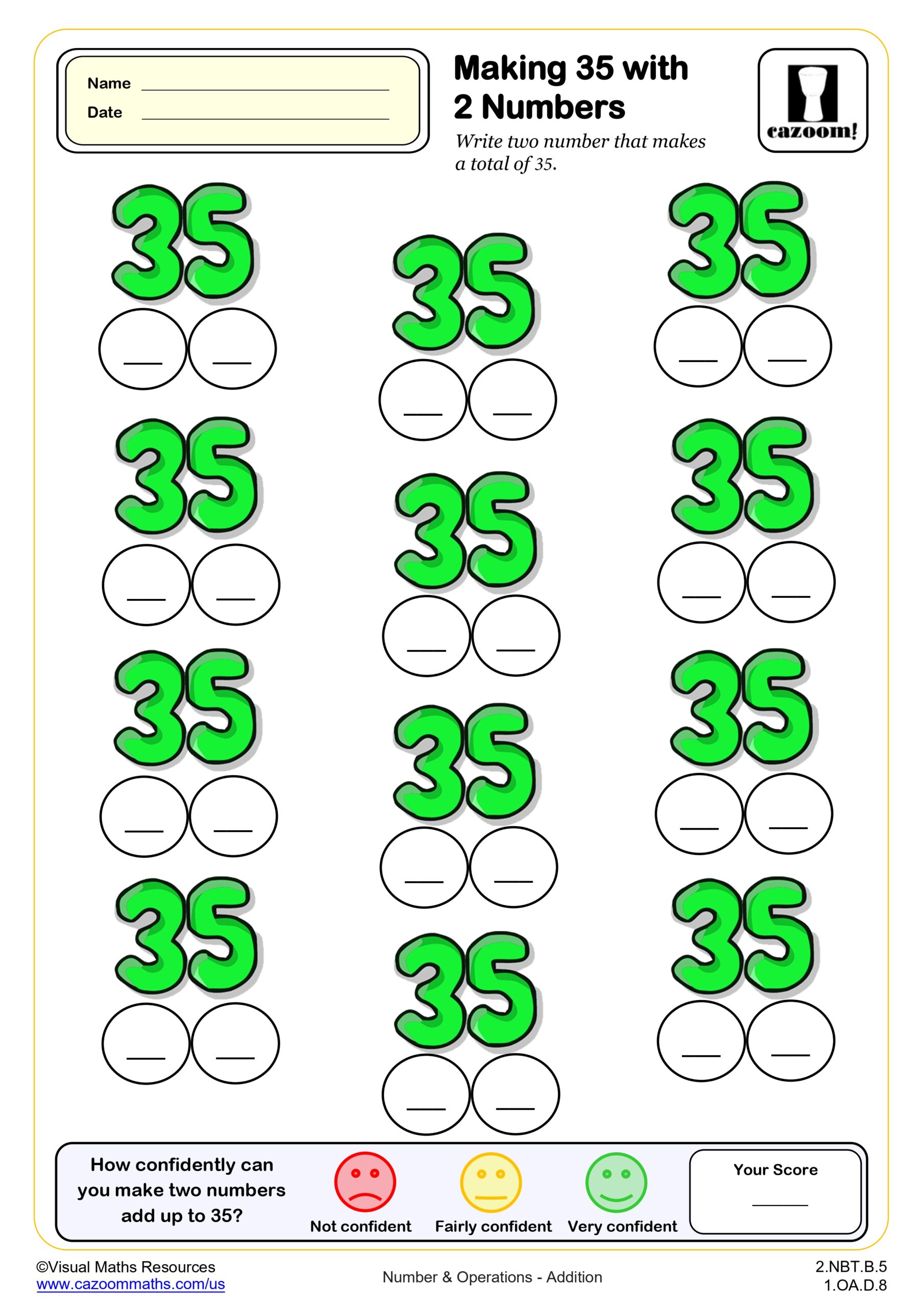
Matching sums to 100 (A)
Grades: 1st Grade, 2nd Grade
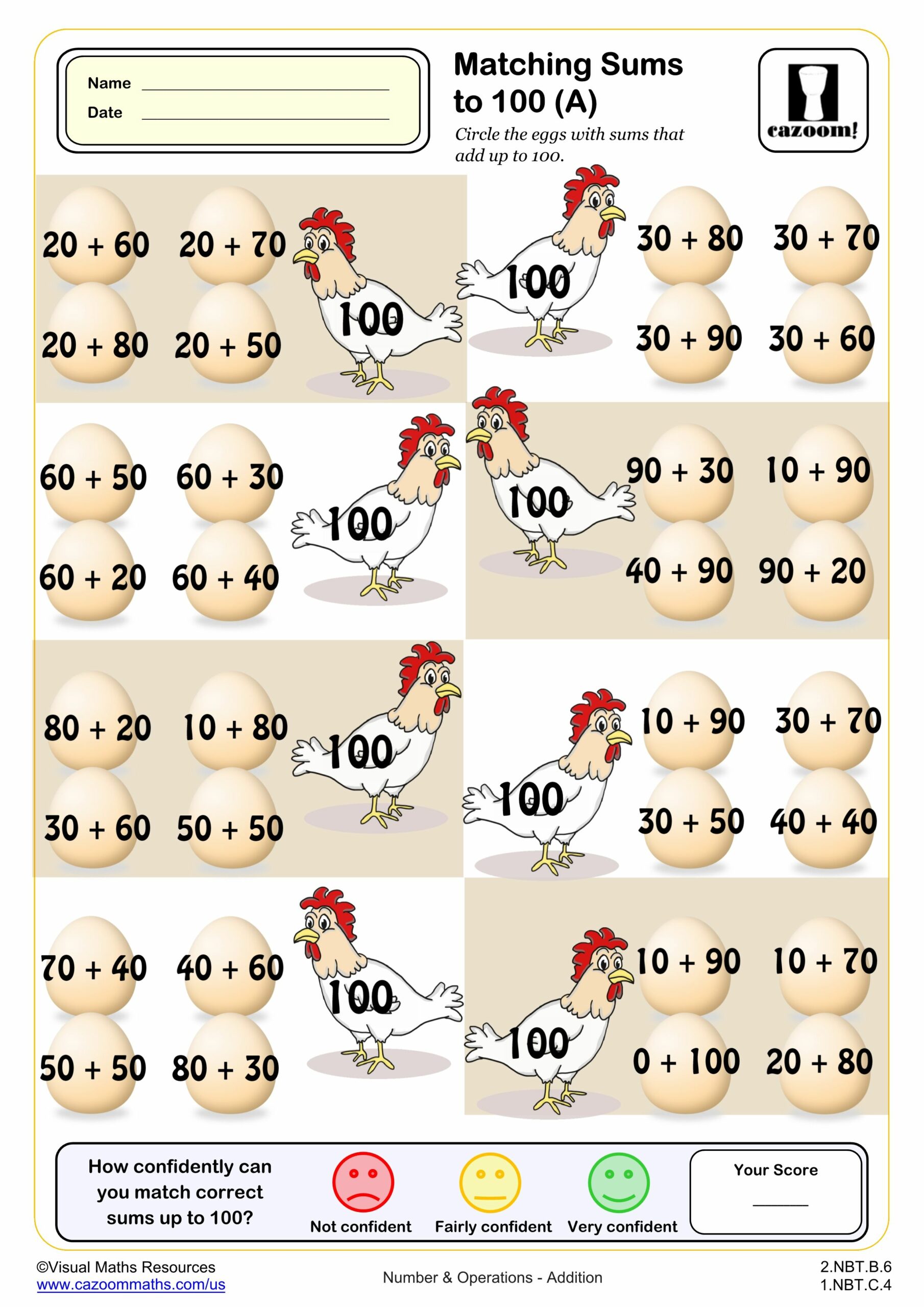
Matching sums to 100 (B)
Grades: 1st Grade, 2nd Grade

Matching sums to 100 (C)
Grades: 1st Grade, 2nd Grade

Number bond to 100 Drills (A) (10 questions)
Grades: 1st Grade, 2nd Grade
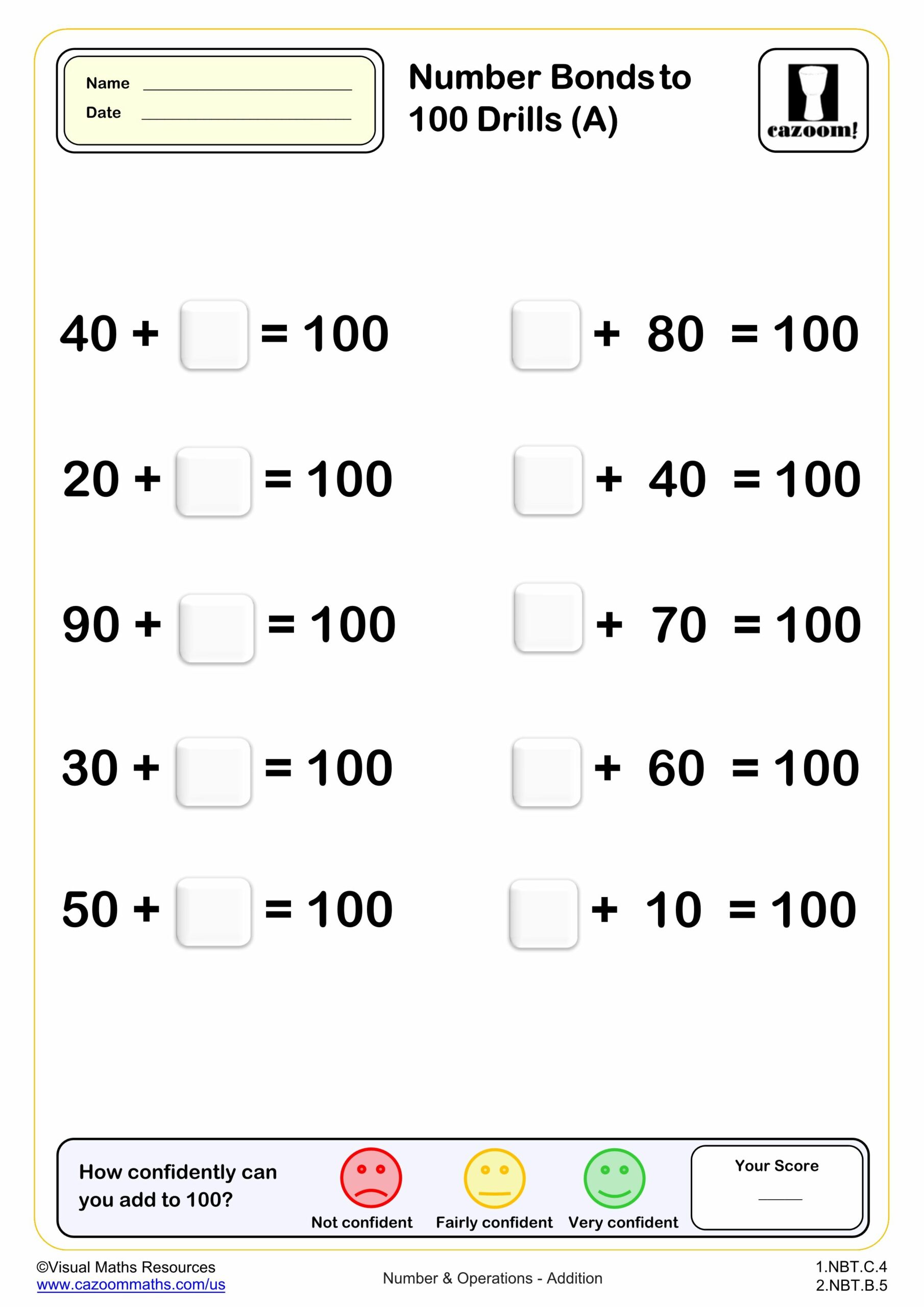
Number bond to 100 Drills (A) (20 questions)
Grades: 1st Grade, 2nd Grade
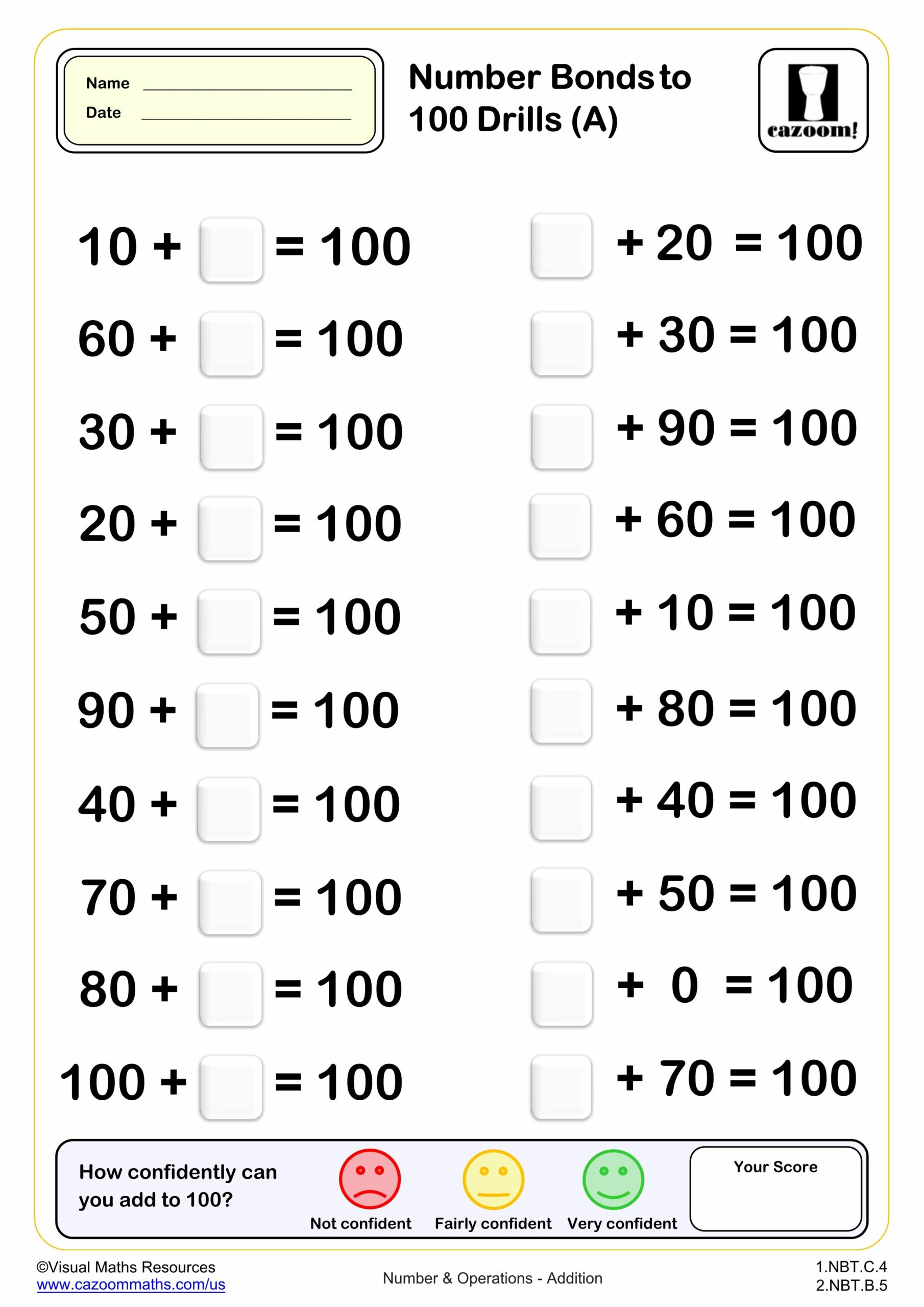
Number bond to 100 Drills (A) (50 questions)
Grades: 1st Grade, 2nd Grade
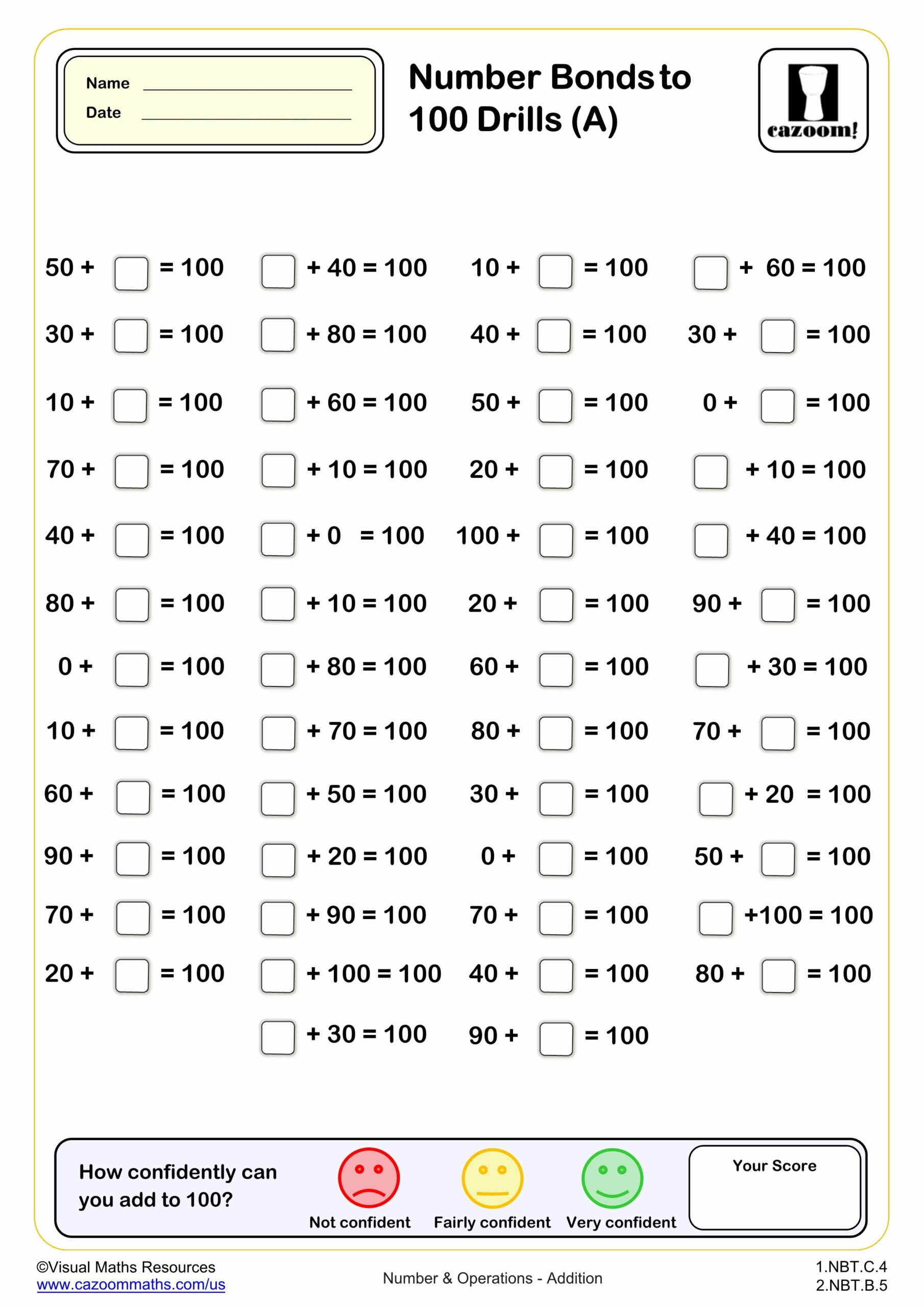
Making 100 with 3 Numbers (A) (multiples of 10)
Grades: 2nd Grade

Making 100 with 3 numbers (B) (multiples of 5)
Grades: 2nd Grade
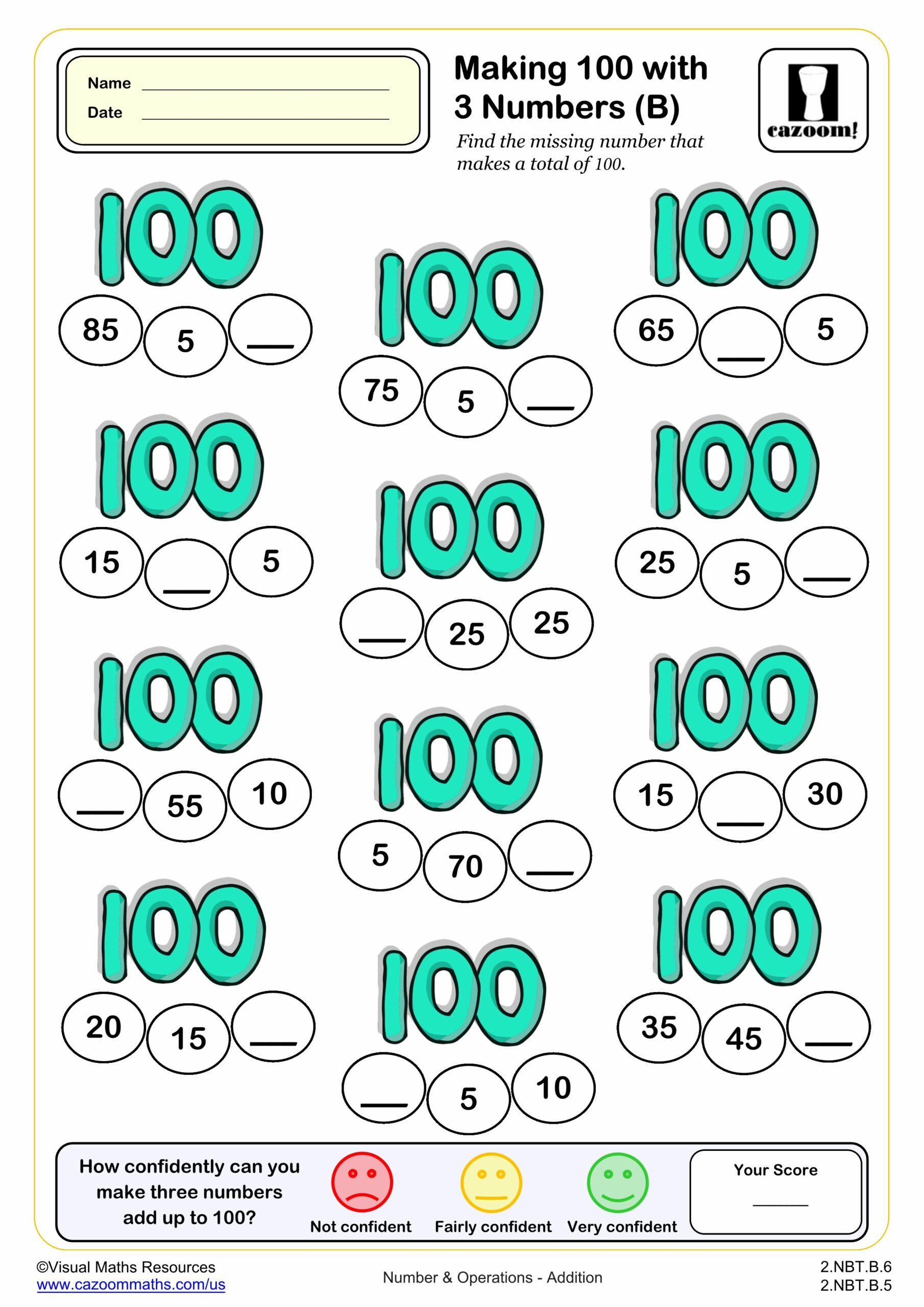
Making 100 with 3 numbers (blanks)
Grades: 2nd Grade
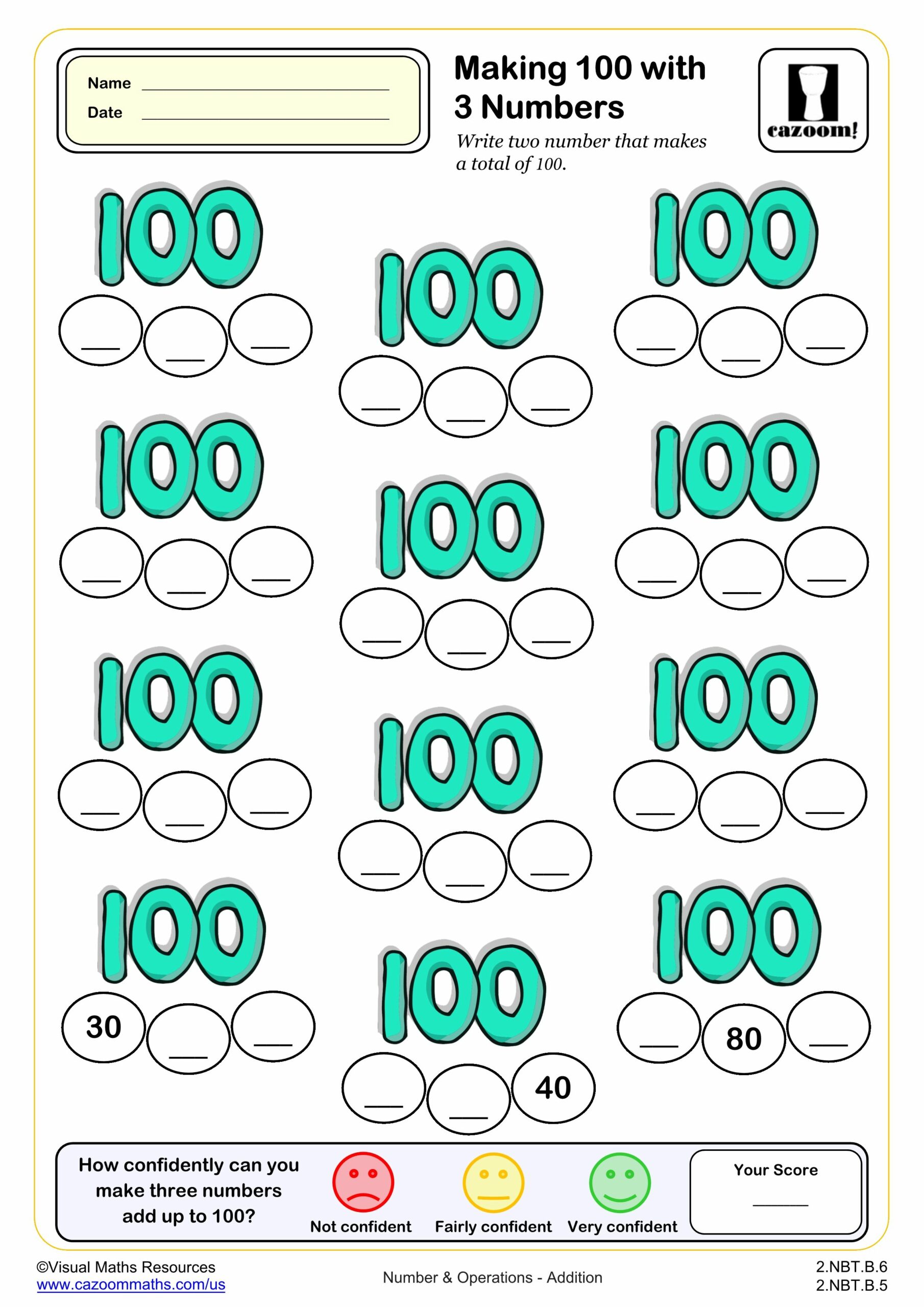
Making 100 with 3 numbers (C)
Grades: 2nd Grade

Making 100 with 3 numbers (D) (no regrouping)
Grades: 2nd Grade
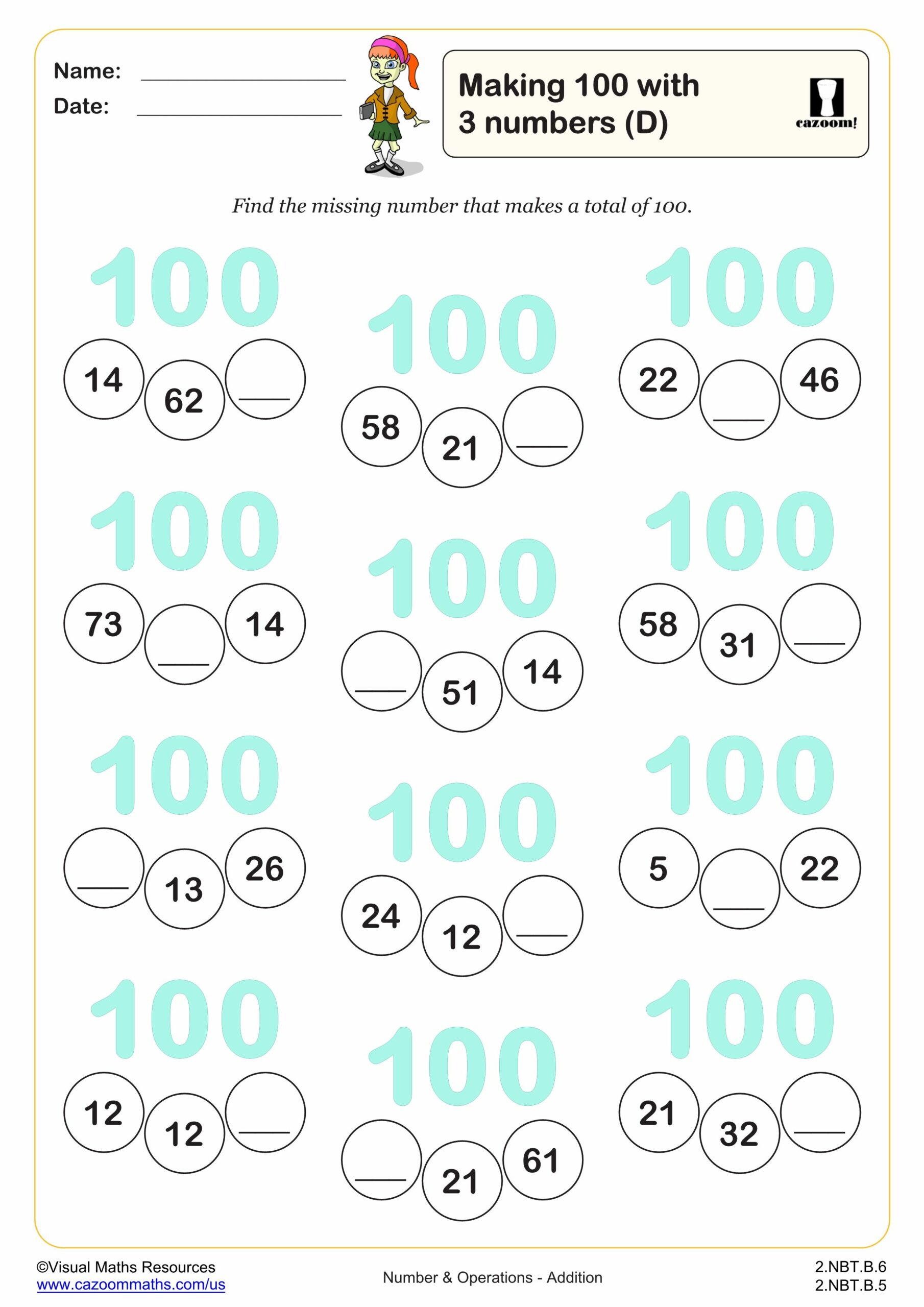
Making 100 with 3 numbers (E) (with regrouping)
Grades: 2nd Grade
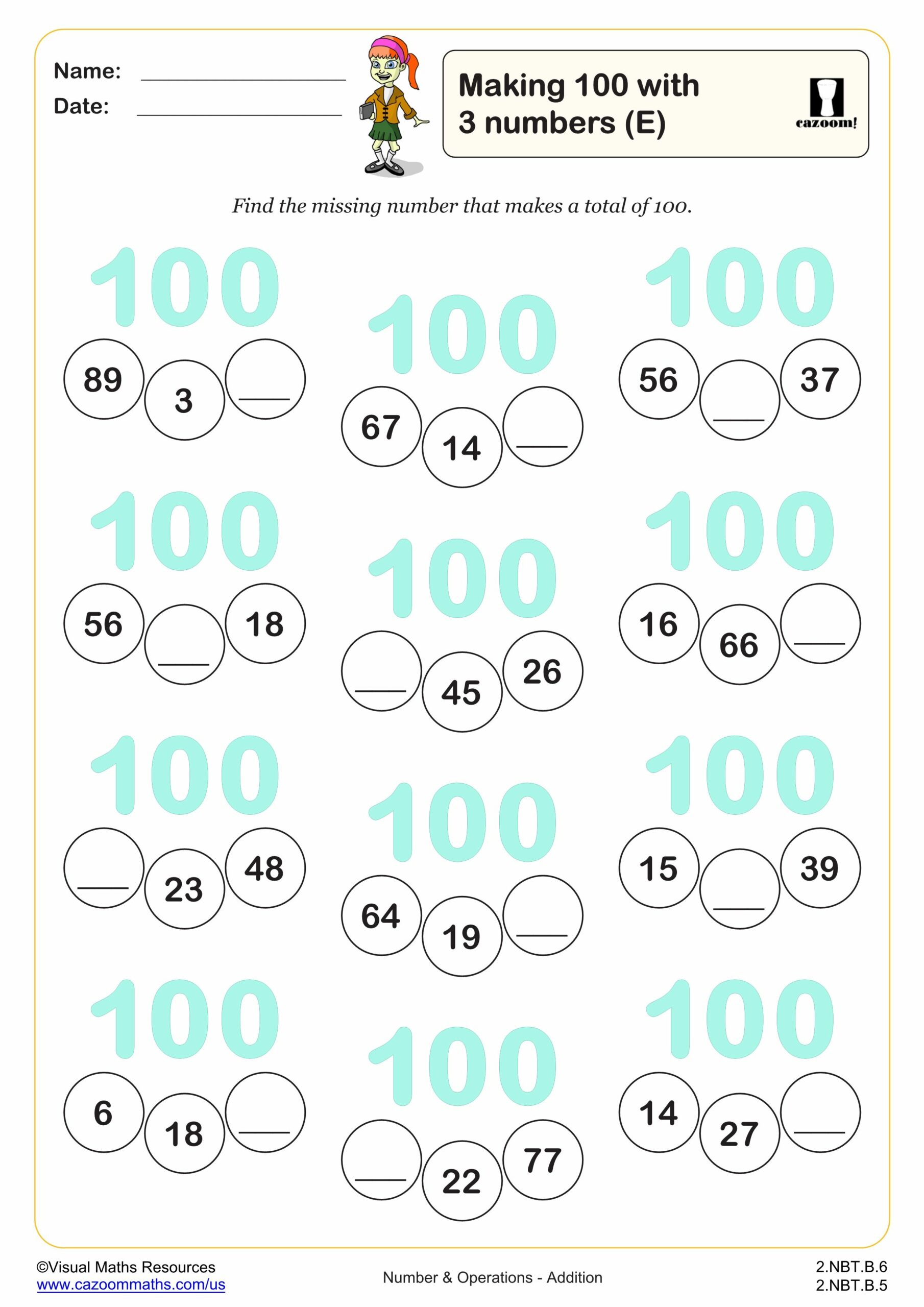
Making 1000 with 3 numbers using multiples of 10
Grades: 2nd Grade, 3rd Grade
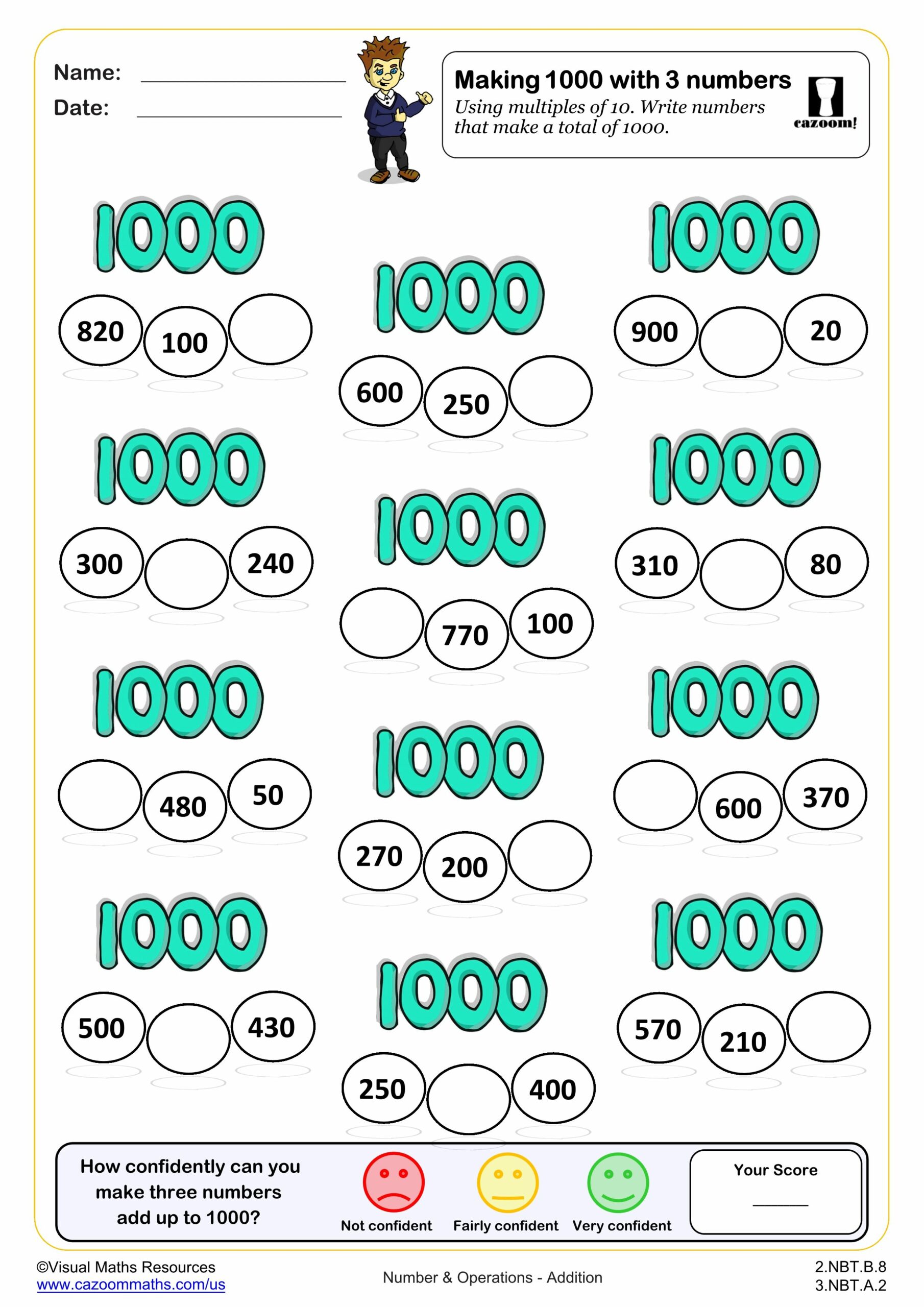
Making 1000 with 3 numbers using multiples of 100
Grades: 2nd Grade, 3rd Grade
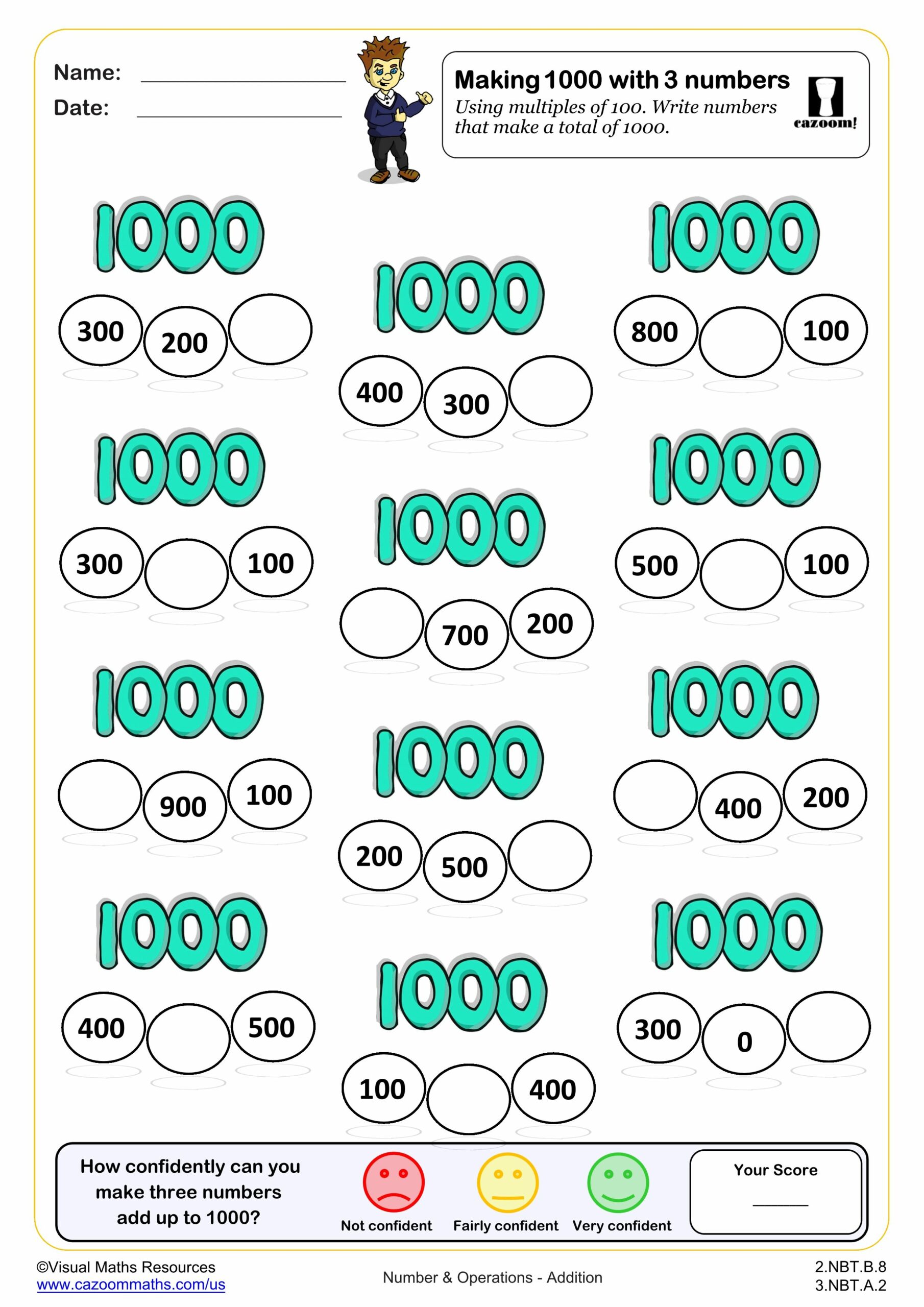
Number bond to 100 Drills (B) (10 questions)
Grades: 2nd Grade
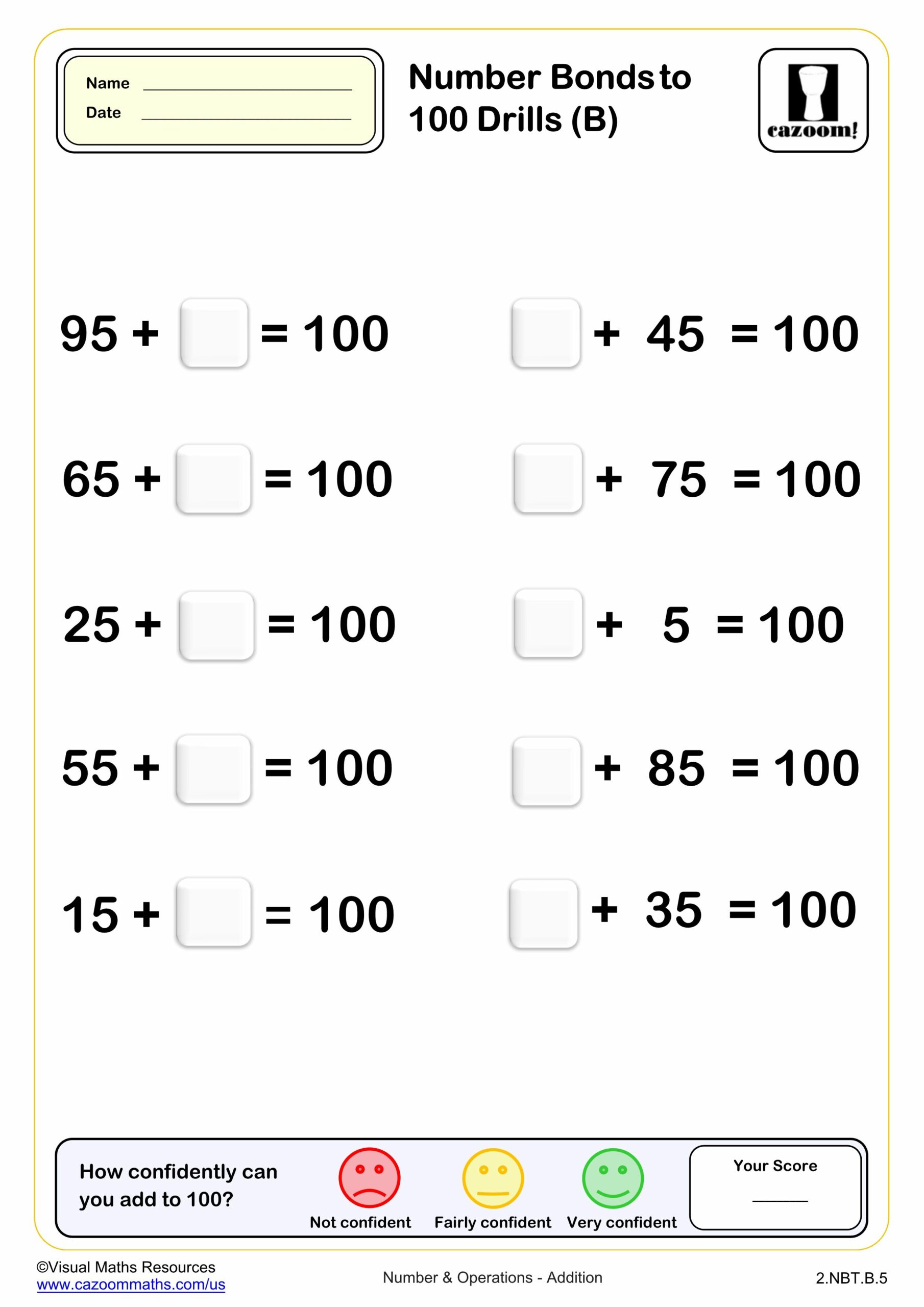
Number bond to 100 Drills (B) (20 questions)
Grades: 2nd Grade

Number bond to 100 Drills (B) (50 questions)
Grades: 2nd Grade
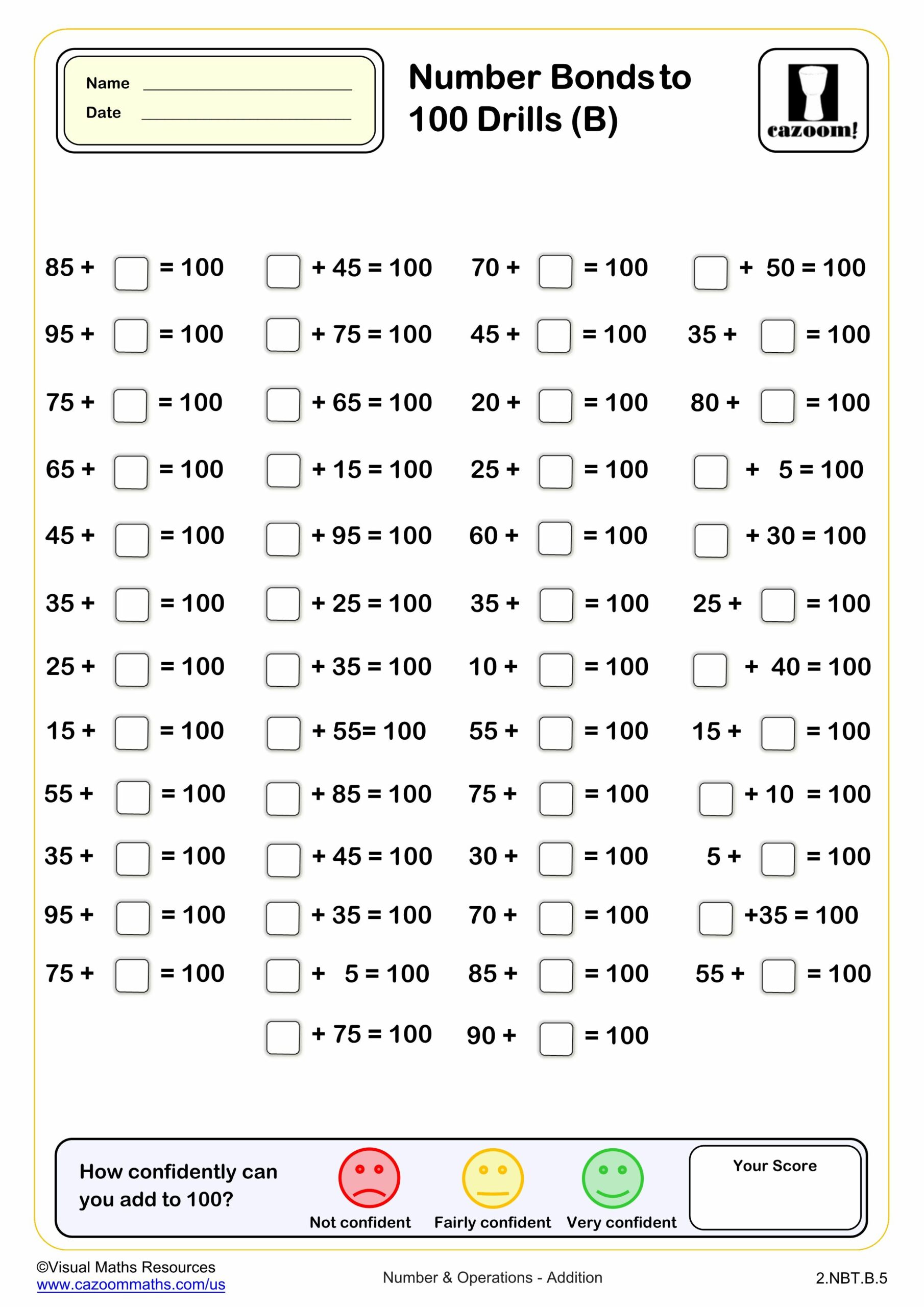
Number bond to 100 Drills (C) (10 questions)
Grades: 2nd Grade
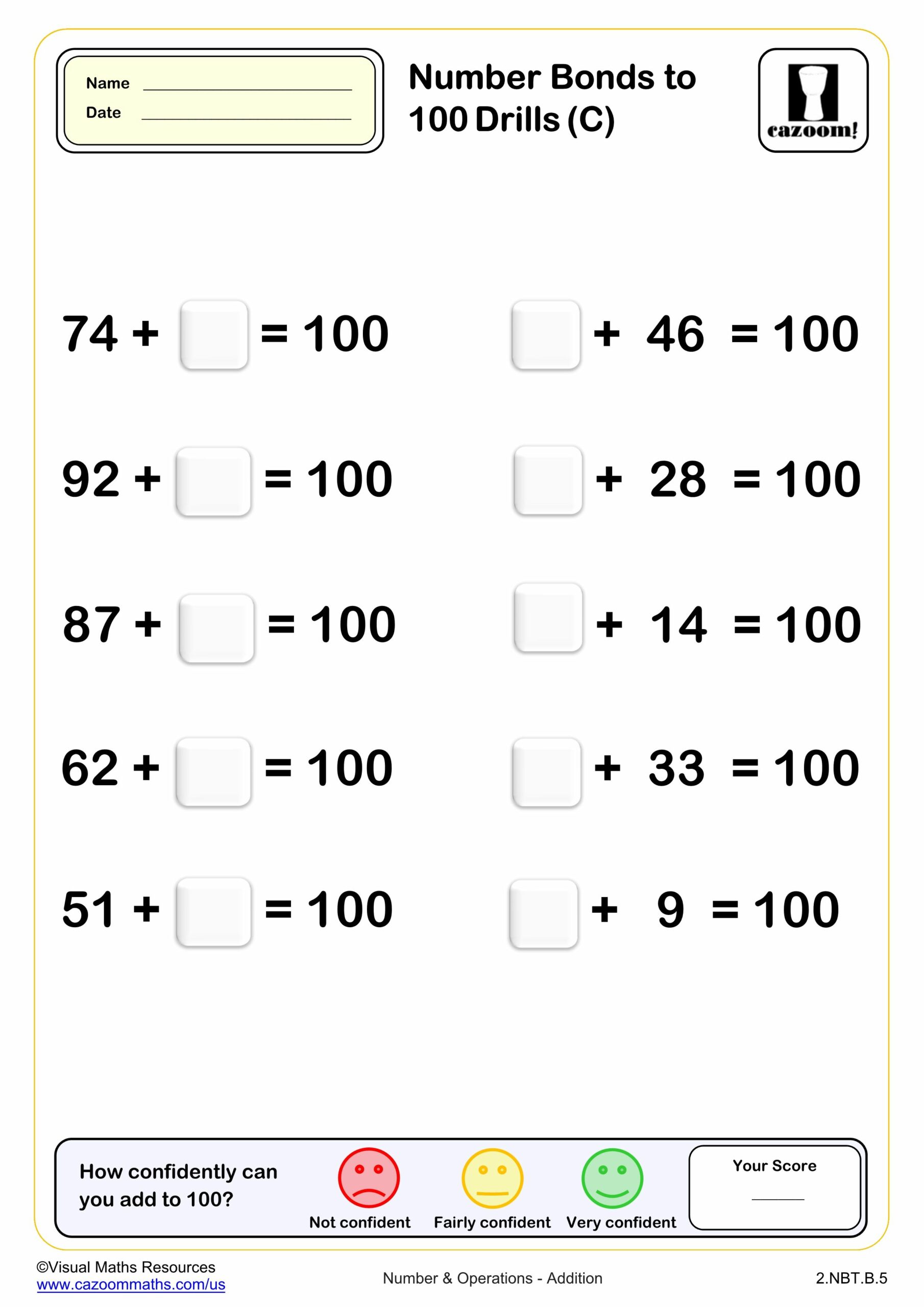
Number bond to 100 Drills (C) (20 questions)
Grades: 2nd Grade
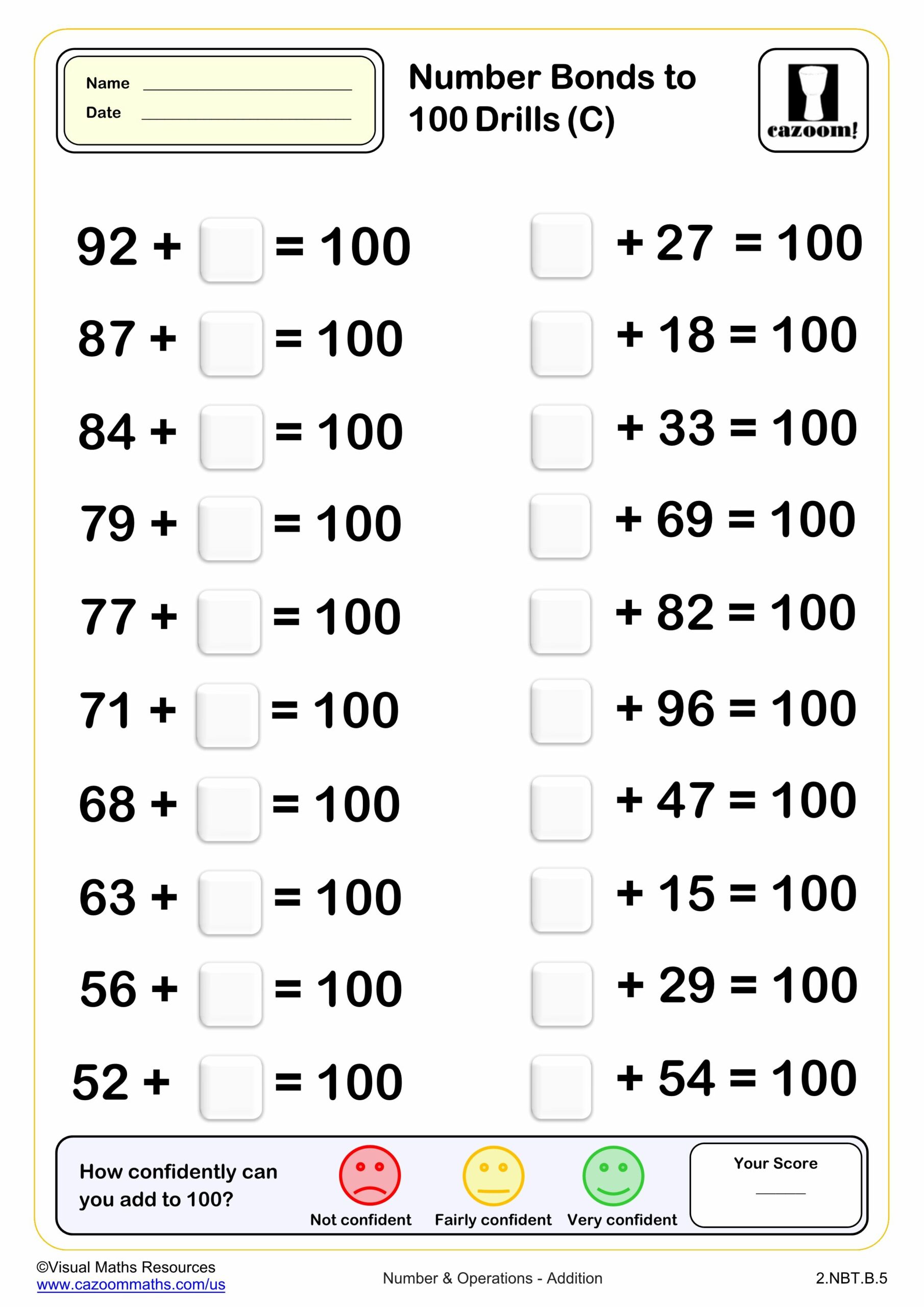
Number bond to 100 Drills (C) (50 questions)
Grades: 2nd Grade
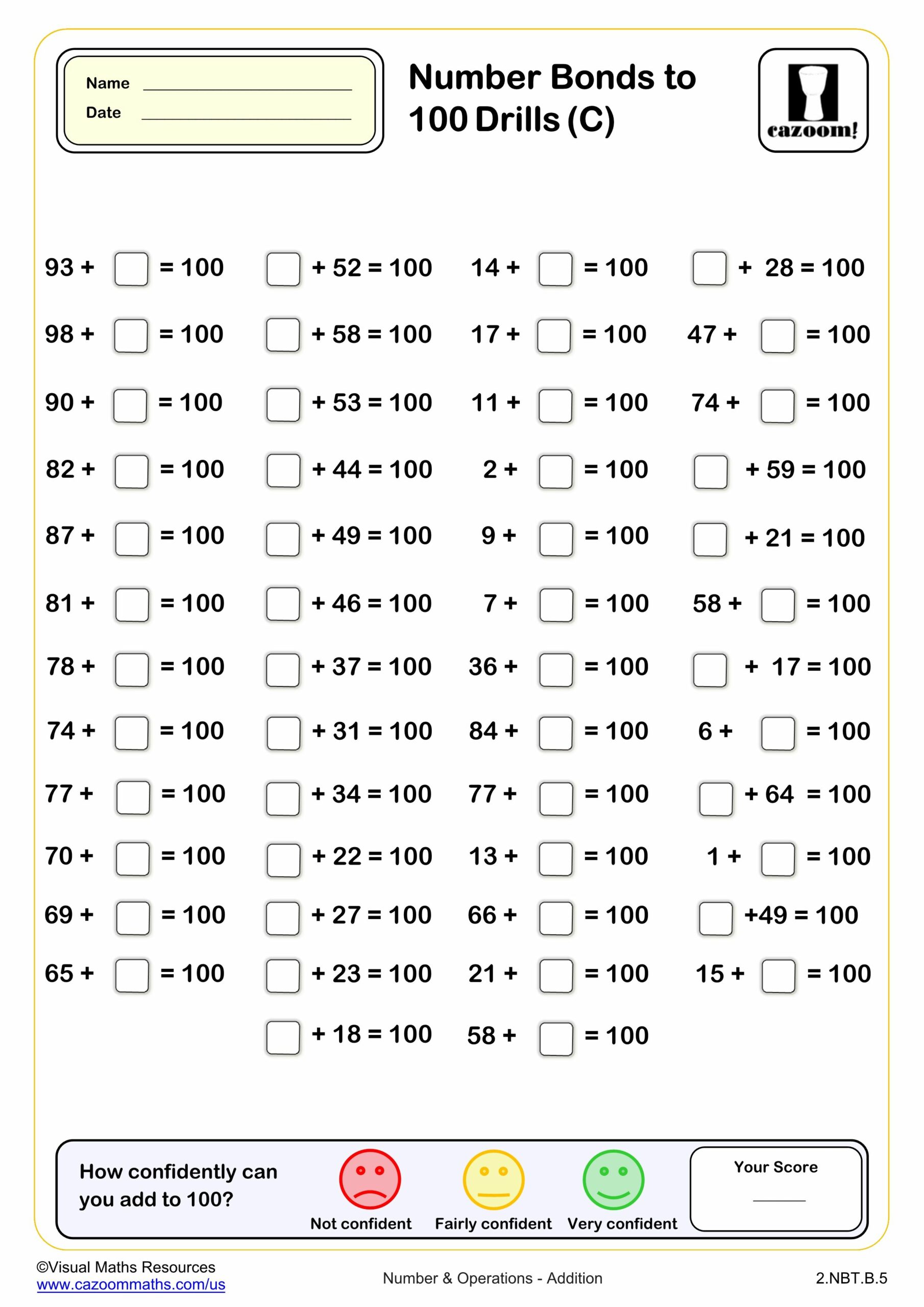
Number bond to 50 Drills (A) (10 questions)
Grades: 2nd Grade
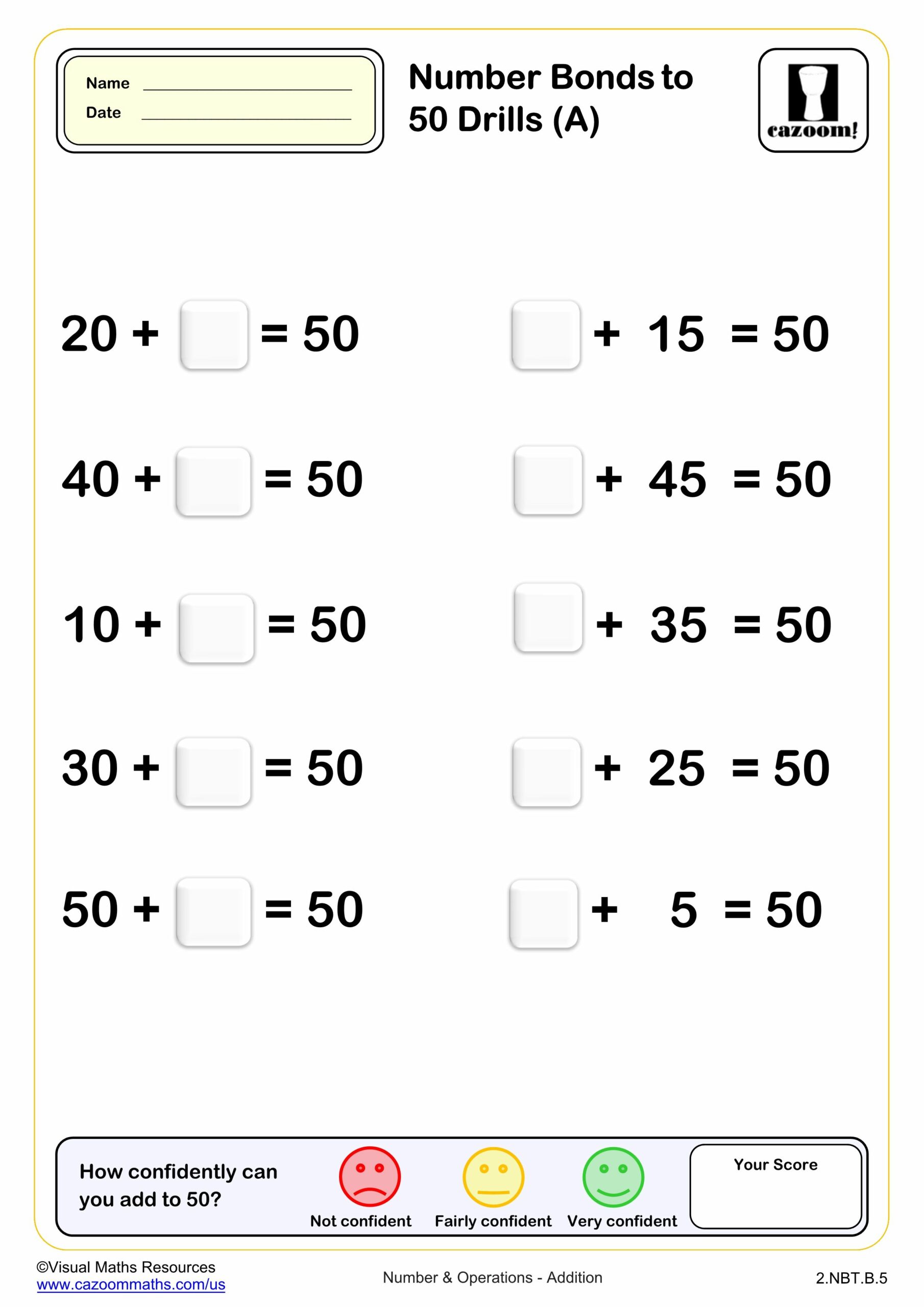
Number bond to 50 Drills (A) (20 questions)
Grades: 2nd Grade
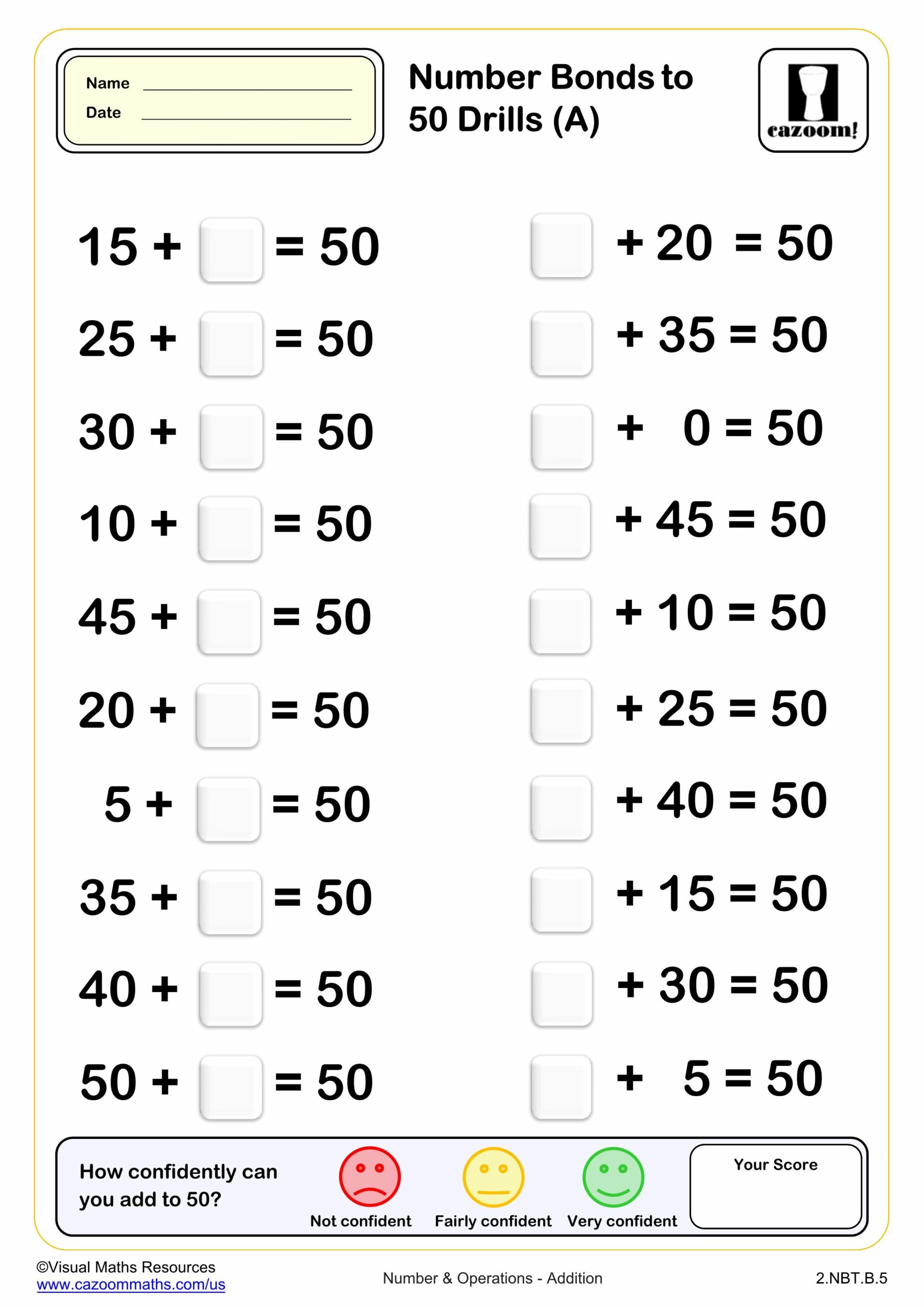
Number bond to 50 Drills (A) (50 questions)
Grades: 2nd Grade
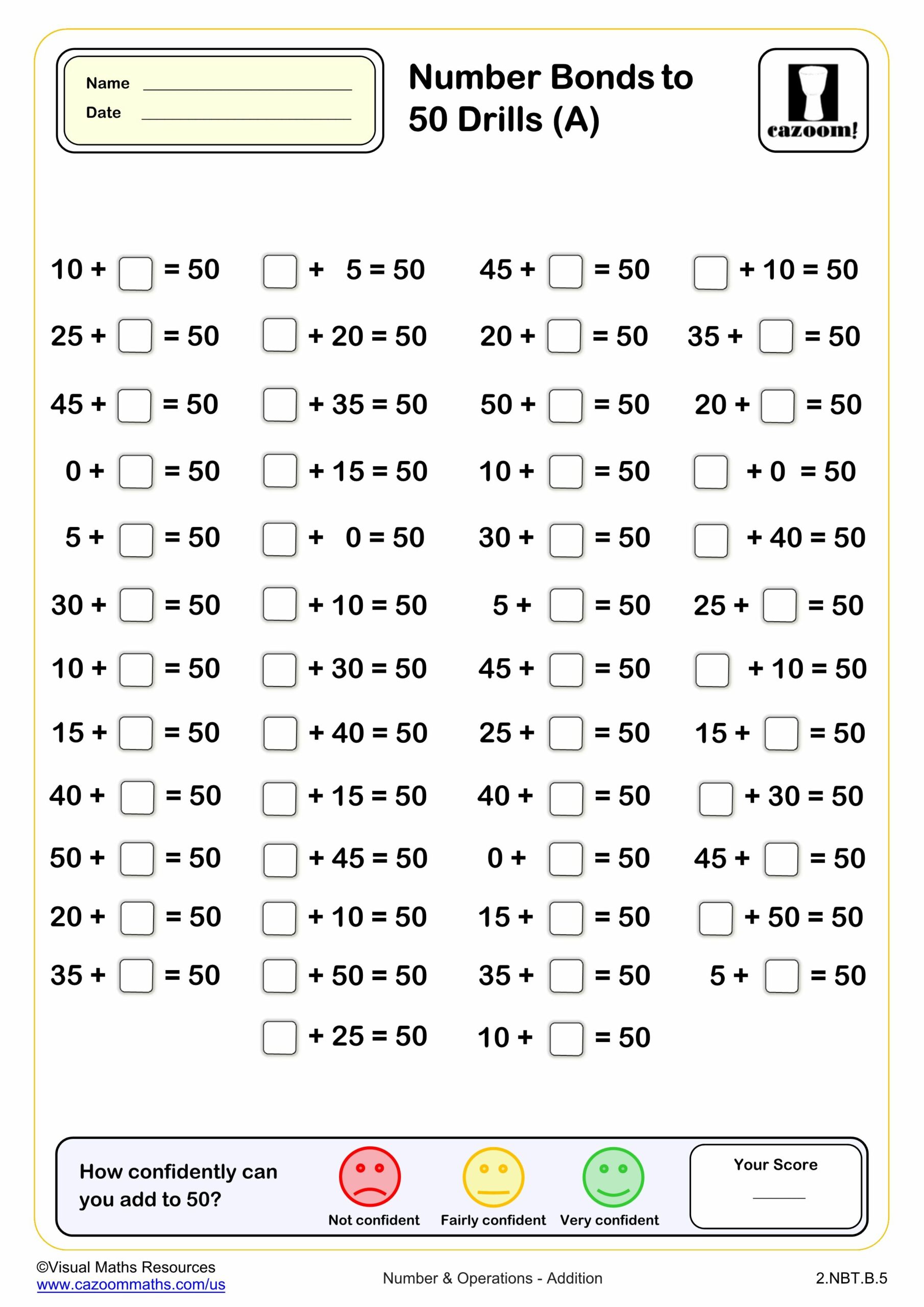
Number bond to 50 Drills (B) (10 questions)
Grades: 2nd Grade

Number bond to 50 Drills (B) (20 questions)
Grades: 2nd Grade
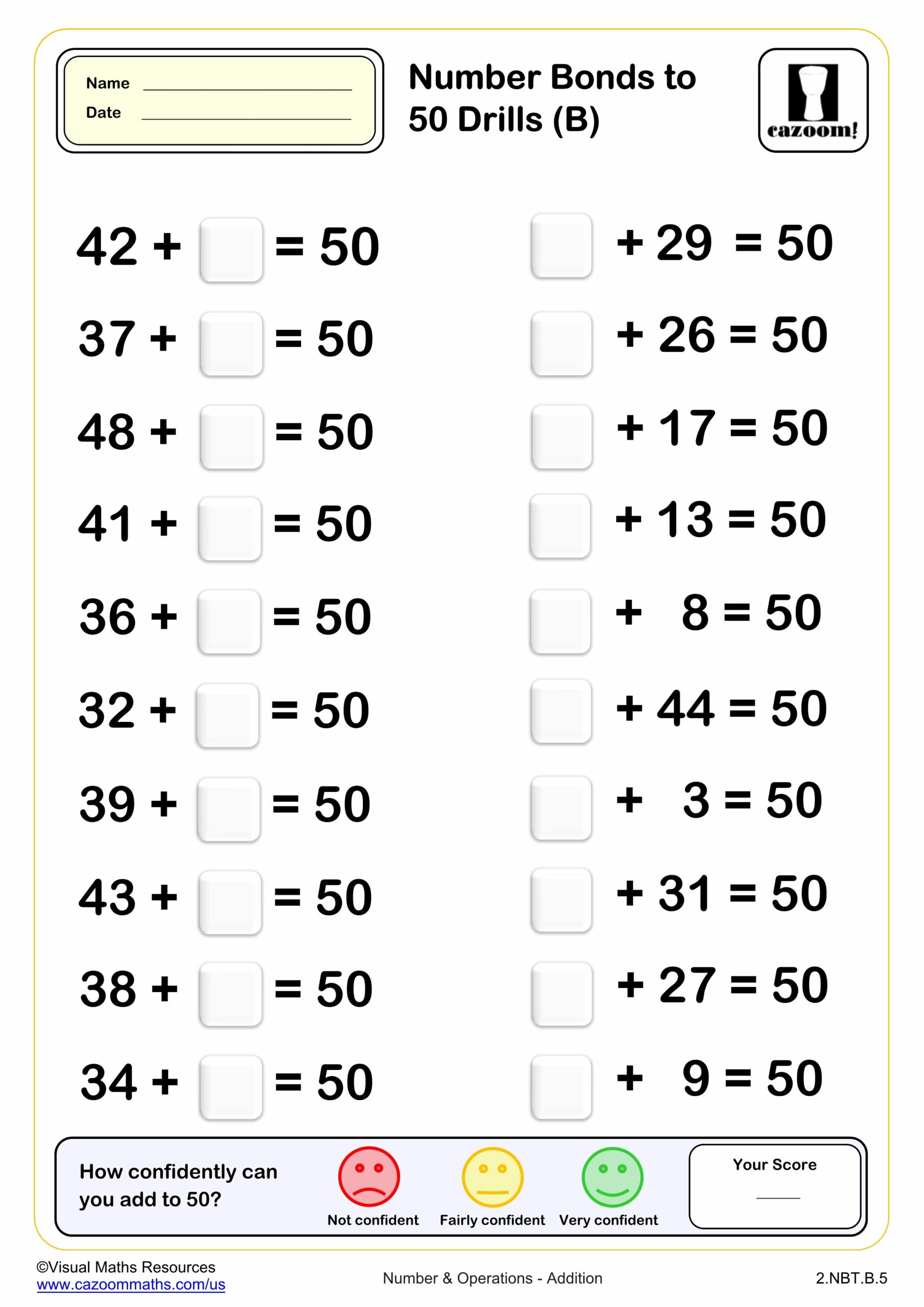
Number bond to 50 Drills (B) (50 questions)
Grades: 2nd Grade
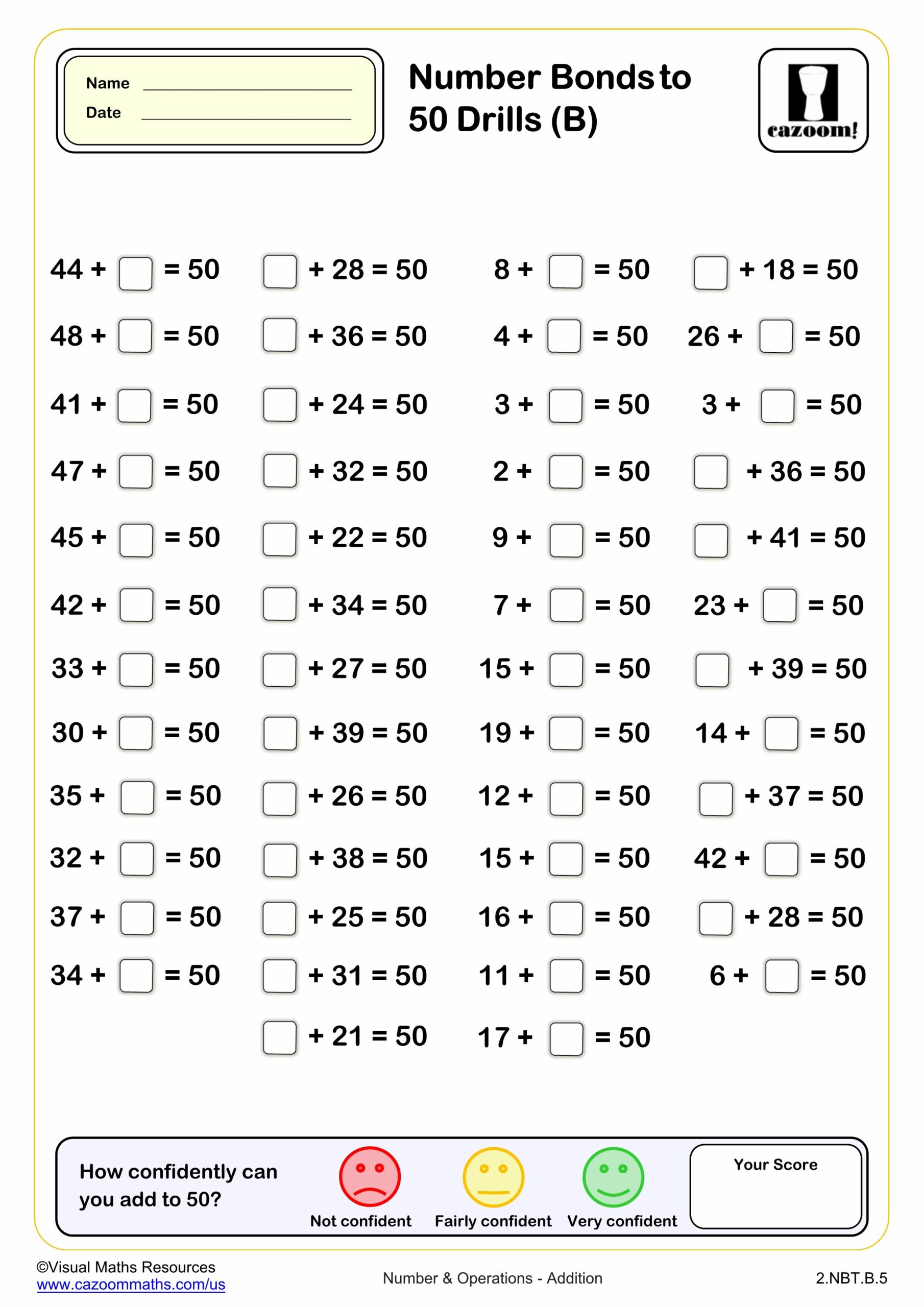
Printable PDF Number Bond Worksheets with Answers
Download our printable PDF, number bonds over 20 resources right away to give students the push they need when learning the core ideas of number bonds. Our math experts have specifically curated these resources in a way that your children can master these concept-based worksheets using simple sums with clear and easy-to-understand instructions. Hence, our number bond resources are great for building a sense of numbers and early problem-solving skills.
What Are Number Bonds Over 20?
Number bonds over 20 show how two or more numbers can be added to make a total greater than 20. For example, 27 can be split into 20 and 7, or 15 and 12. These worksheets help students practice different ways to make these combinations. Understanding number bonds helps children develop number sense and fluency in math.
Why Is It Important to Learn Number Bonds Over 20?
Learning number bonds over 20 helps students improve their addition and subtraction skills. It makes mental math faster and builds a strong foundation for working with larger numbers. When children know number bonds well, they solve problems more easily and with less stress. This knowledge is also helpful when moving on to column addition and regrouping.
Real-Life Uses of Number Bonds
Number bonds are useful in everyday situations. Children use them to count money, track scores in games, and measure ingredients while cooking. For example, knowing that 25 + 25 = 50 helps when making change or handling money. These worksheets provide hands-on practice so students can build confidence and apply their math skills in real-world tasks, both at home and in school.
Prerequisite Knowledge to Learn Number Bonds Over 20
Before learning number bonds over 20, students should be comfortable with:
• Counting up to 30
• Knowing number bonds to 10 and 20
• Basic addition and subtraction facts
• Using a number line or ten frame
Our worksheets can be used to reinforce this knowledge while gently introducing more complex number combinations.
FAQs: NUMBER BONDS OVER 20 WORKSHEETS
Q: What grade level are these worksheets for?
A: These worksheets are best for 1st and 2nd grade students who are ready to work with numbers over 20.
Q: Do these worksheets include answer keys?
A: Yes, every worksheet comes with a full answer key for easy checking.
Q: Can these be used for homework?
A: Absolutely. They’re great for classwork, review, or extra practice at home.
Q: Are they Common Core aligned?
A: Yes, the worksheets align with Common Core standards for addition and number sense in early grades.